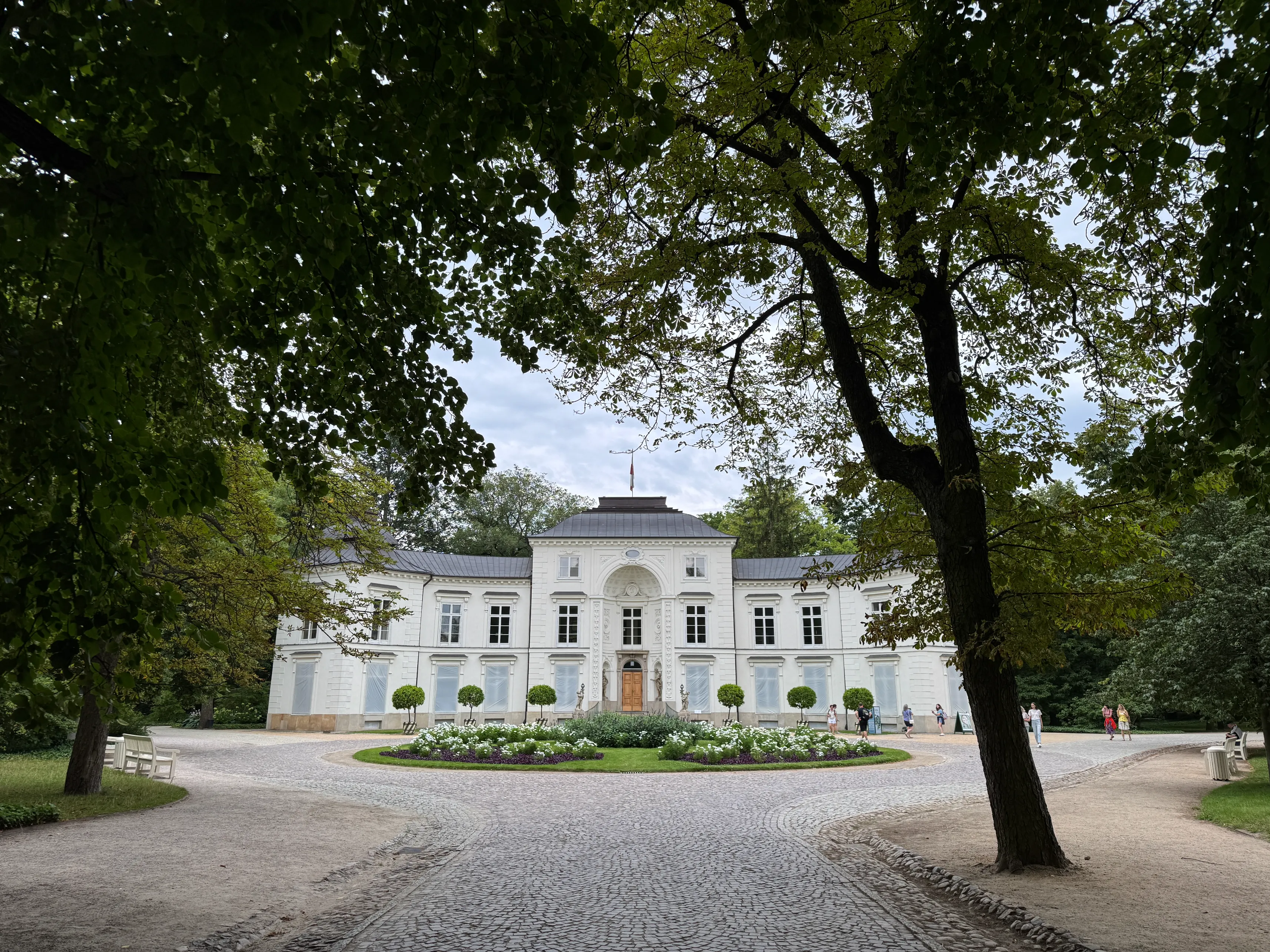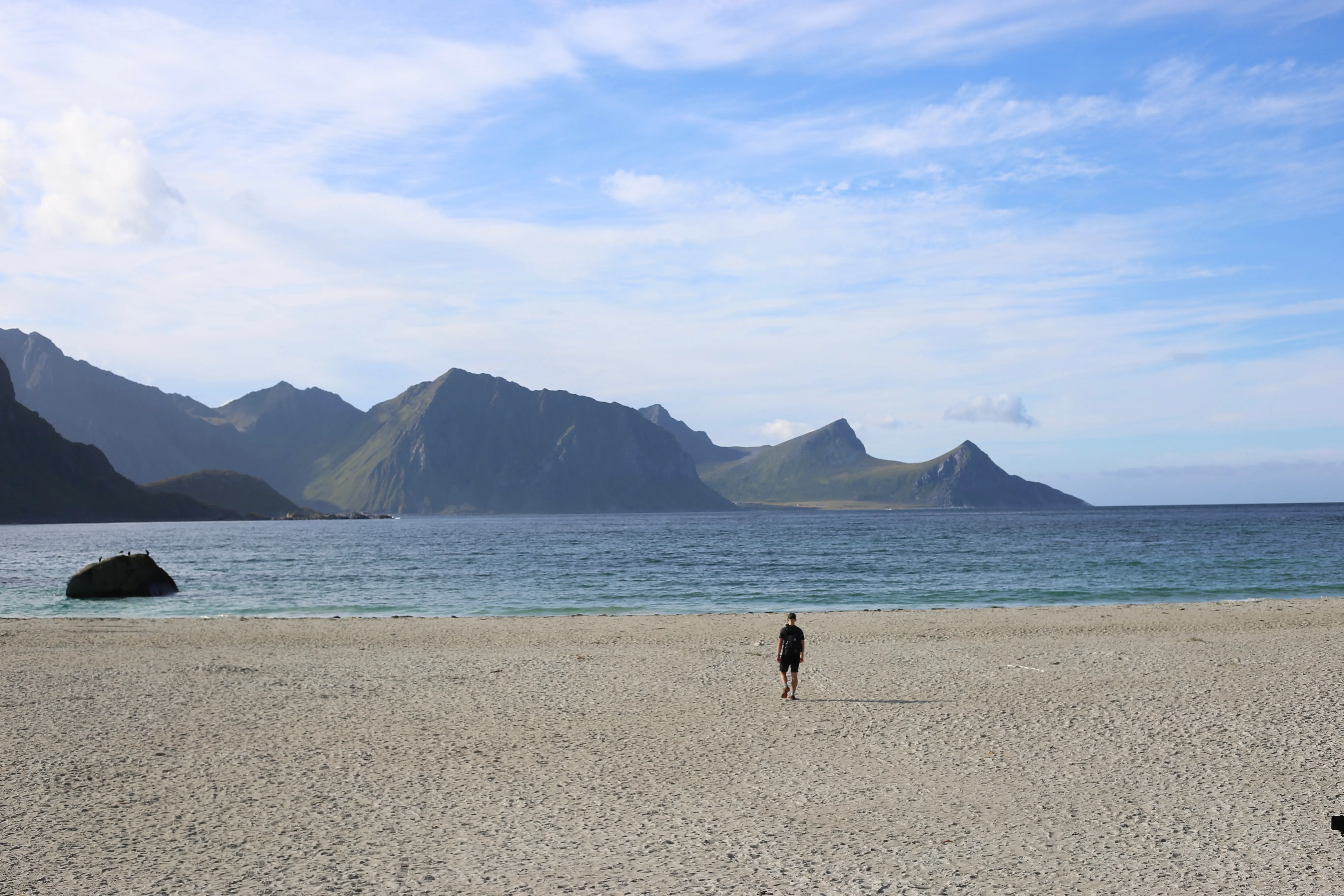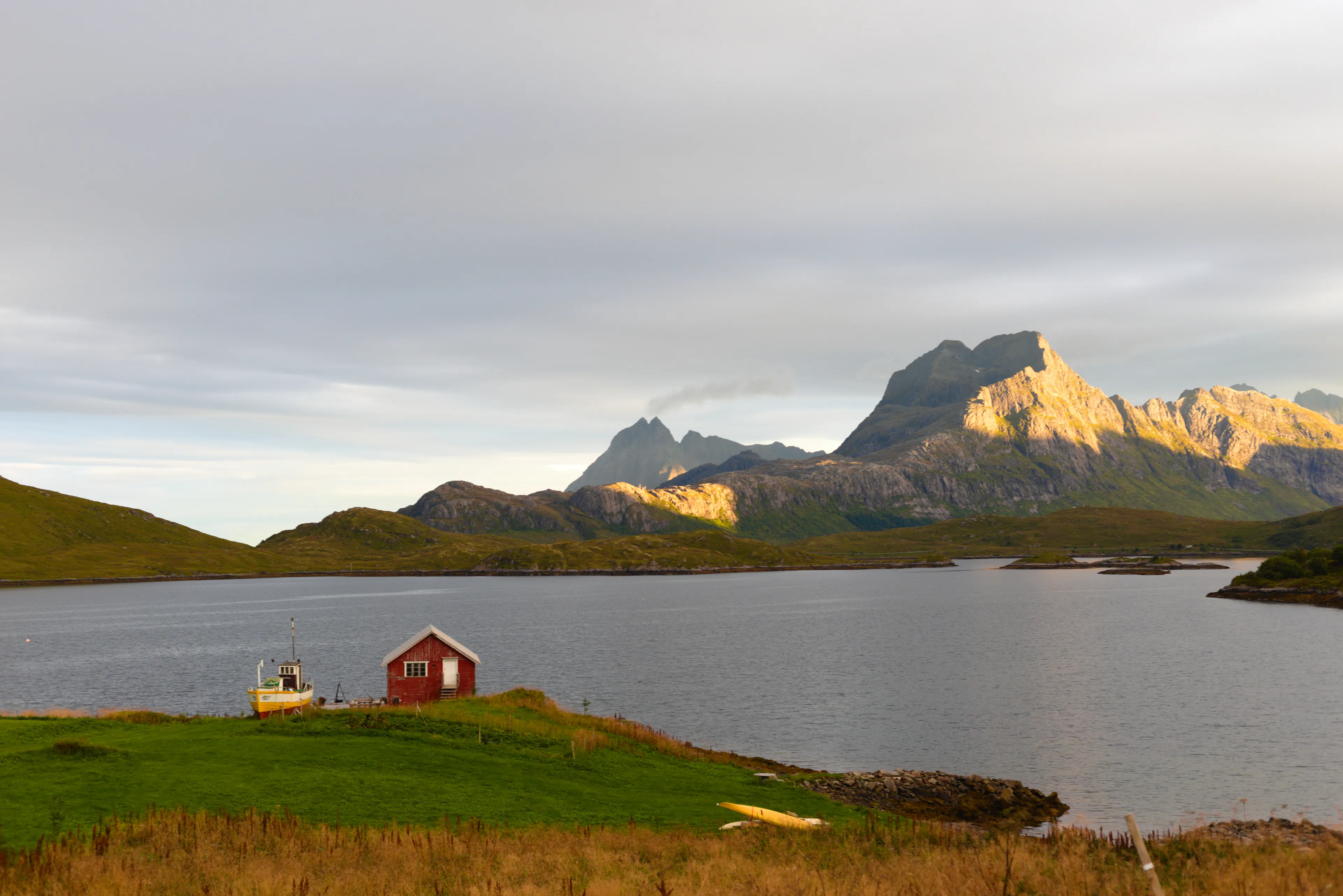Warsaw
In our opinion, an important point on the map to visit, especially by every Pole. Warsaw is an important scientific, cultural, political and economic center. It houses many headquarters of important international institutions as well as the national government. Warsaw also has enormous historical significance. The city went through a lot during the wars and suffered very extensive damage, making most of it ruins. After World War II, the historic Old Town and many other monuments were rebuilt. Then the city was built in the spirit of modernism and socialist realism, and future expansion of roads and streets was also considered. Warsaw is also a place of culture, with countless museums, theaters, philharmonics, libraries, cultural events, festivals and concerts. Everyone can find something for themselves. A lot happens in Warsaw, which is why it is also a city of entertainment full of restaurants, clubs, bars, cafes, as well as meeting places. Both during the day and at night, the city pulses with life. From morning, people swarm around the city, to work, to school, implementing or using various services. In the late afternoon, pubs and restaurants begin to fill up, as well as the Vistula Boulevards. Warsaw's map also includes many sports venues organizing various disciplines. The most famous of them is the National Stadium, mainly associated with football matches, but the facility is multifunctional and also organizes entertainment shows such as music concerts or competitions in other sports. For fans of athletics, there is also the Skra Warsaw stadium at AWF. Many spectacular events are also organized at the Torwar Hall. Warsaw is also an important transport hub with 2 airports and a developed railway network and extensive urban transport. For many, it's a transfer point to further destinations.
We have managed to visit Warsaw several times. Each time the city showed us a different face and evoked different feelings. Interestingly, each time we could notice real changes: new squares, renovated buildings, better organized public spaces. The capital is clearly developing and trying to care for the comfort of both residents and tourists. Several things surprised us in Warsaw. First of all, cleanliness in the center. Of course, not everywhere, but in the strict center on main streets, squares and around tourist attractions are really well-maintained. What's more, in our opinion, Warsaw is not overwhelming. Unlike some European big cities that we have already managed to visit like Rome, Vienna or Barcelona. We didn't have the feeling that we were in a crowd that was too much for us. There is space, air, places to rest. Even in the center you can catch a moment of silence, sit on a bench or in a park and just rest. This doesn't mean you shouldn't be careful. However, there are fewer hustlers and scammers on the streets, which we particularly felt in Italian cities. All this makes Warsaw a city you want to return to. It may not attract with the size of monuments like Paris or Rome, but it makes up for it with atmosphere, accessibility and a good balance between a modern city and living space.
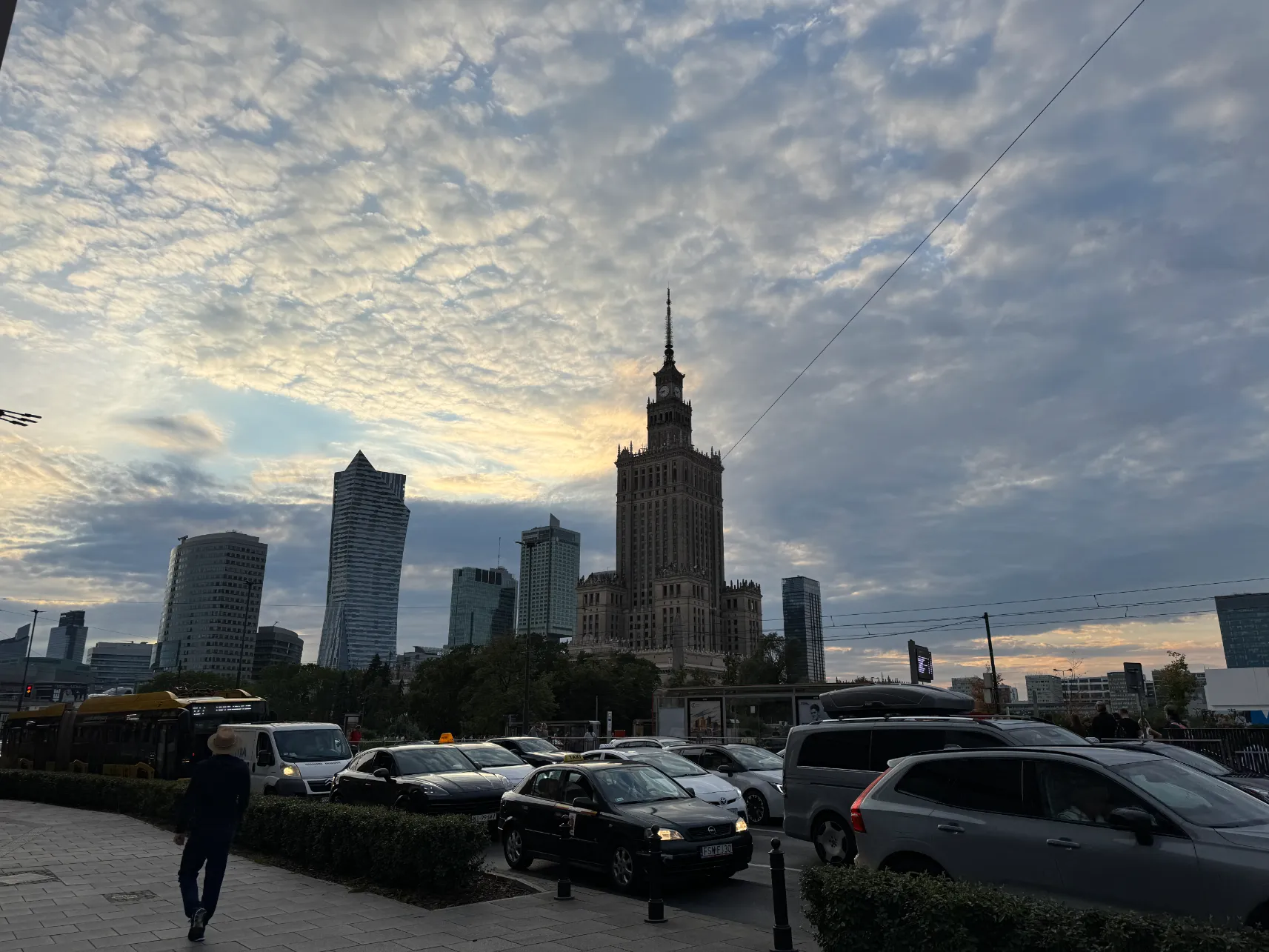
Airports
Warsaw is served by two airports - Chopin Airport (traditionally Okęcie) and Modlin Airport. Chopin Airport is the largest airport in Poland served by airlines such as LOT, Wizz Air, Ryanair, SAS, Lufthansa and many others, both in passenger, charter and cargo services. It is located in the western part of Warsaw in the Włochy district, about 8 km from the center. The easiest way to get from Chopin Airport to the center is by Fast Urban Railway (SKM) (S2, S3) or Mazovian Railways (KM) directly to Central Station, which takes about 20-25 minutes or by city bus. Modlin Airport, on the other hand, is located about 35 km northwest of the Warsaw city center border. It's best to get from there by airport bus (ModlinBus, FlixBus) directly to the center or to Warszawa Zachodnia Station. Modlin Airport has a less extensive network of destinations and serves short and medium-haul flights of low-cost airlines to European cities and charter flights.
Transport
The main international transfer centers are Warszawa Zachodnia, Warszawa Wschodnia and Warszawa Centralna. Warszawa Zachodnia is currently still under renovation, so the station may operate with slight inconveniences. However, there is a large bus station here where you can transfer to long-distance coaches and airport buses. If Warsaw is your main destination, it's best to arrive at Warszawa Centralna. Right in front of the building, you can transfer to a tram or bus. Going a bit further straight ahead, we can get to Warszawa Śródmieście station, from which you can use regional railways (Fast Urban Railway - SKM or Mazovian Railways - KM). Going a bit further, there is a descent to the metro station (with a visible sign - red "M" on a yellow background).
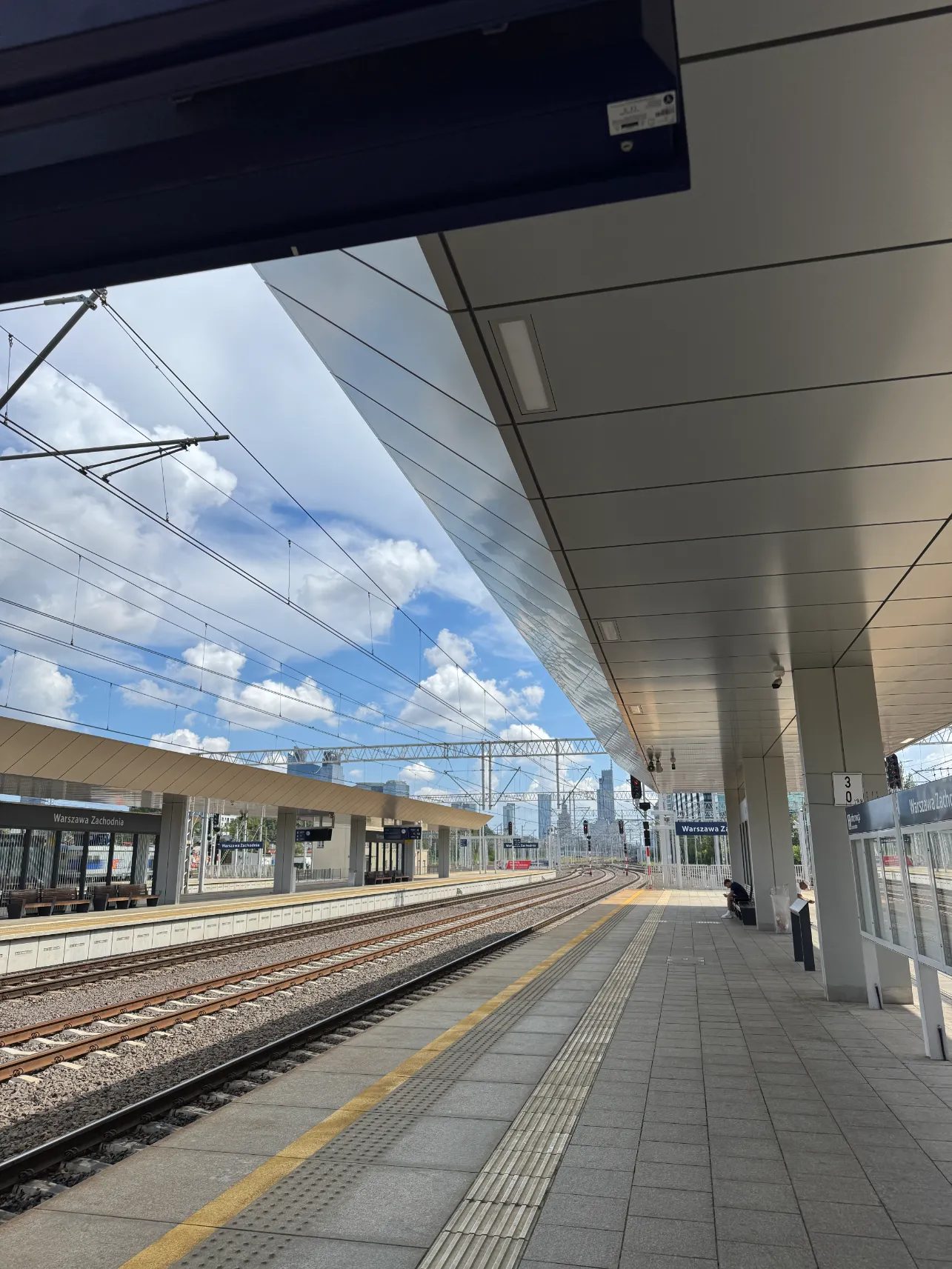
Warsaw West Station
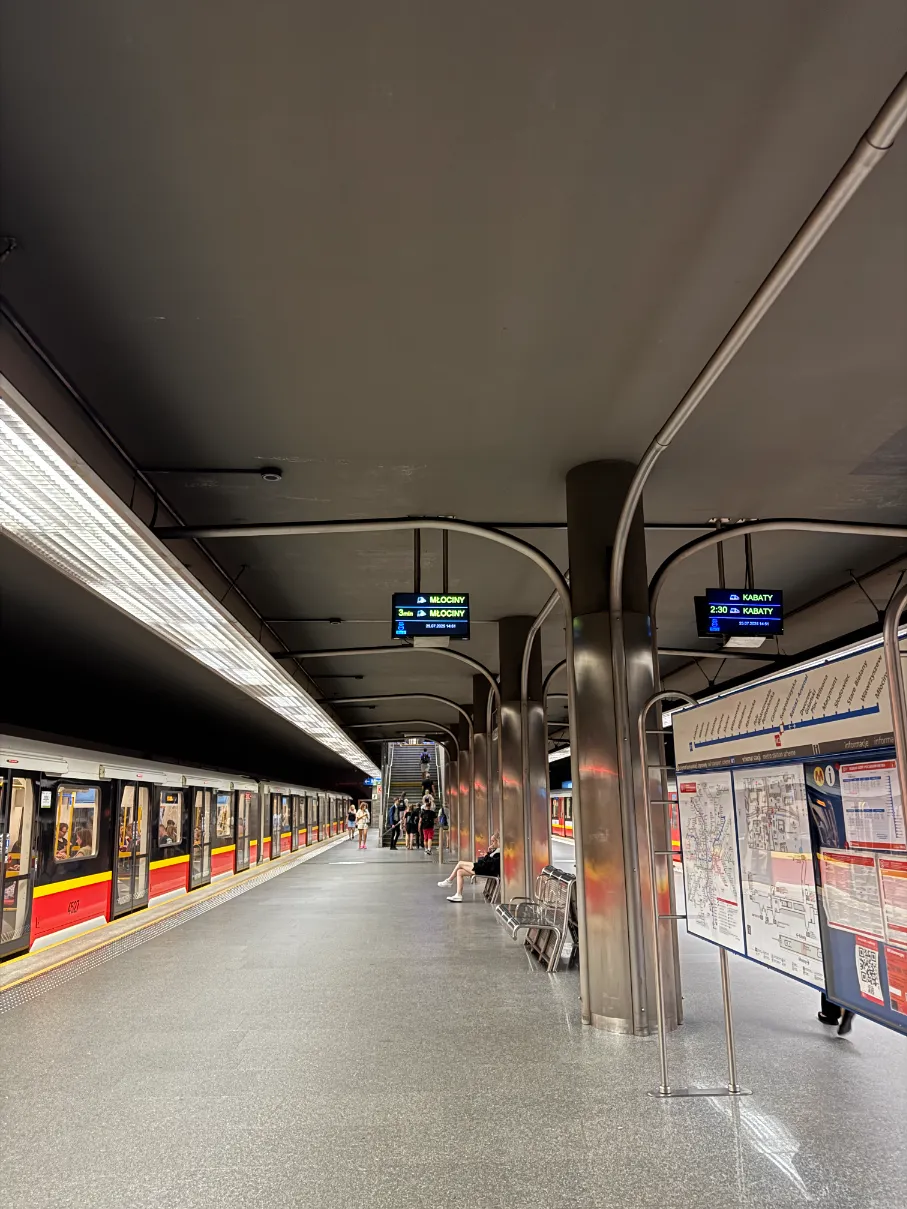
Świętokrzyska Metro
Warsaw is a very well-connected city. There is no problem with moving both around the center and to areas outside the city. It is a convenient option because integrated tickets work for most means of transport, thanks to which you can transfer between specific connections, more about this below.
Warsaw Public Transport
To move around the center, it's best to use the extensive public transport network consisting of buses, trams, trains and metro. Importantly, many of these means of transport can be served with one ticket. There are 2 metro lines operating in Warsaw. There are plans to expand the Warsaw metro by another 2 lines, but these are quite distant plans. Metro map from the official website:
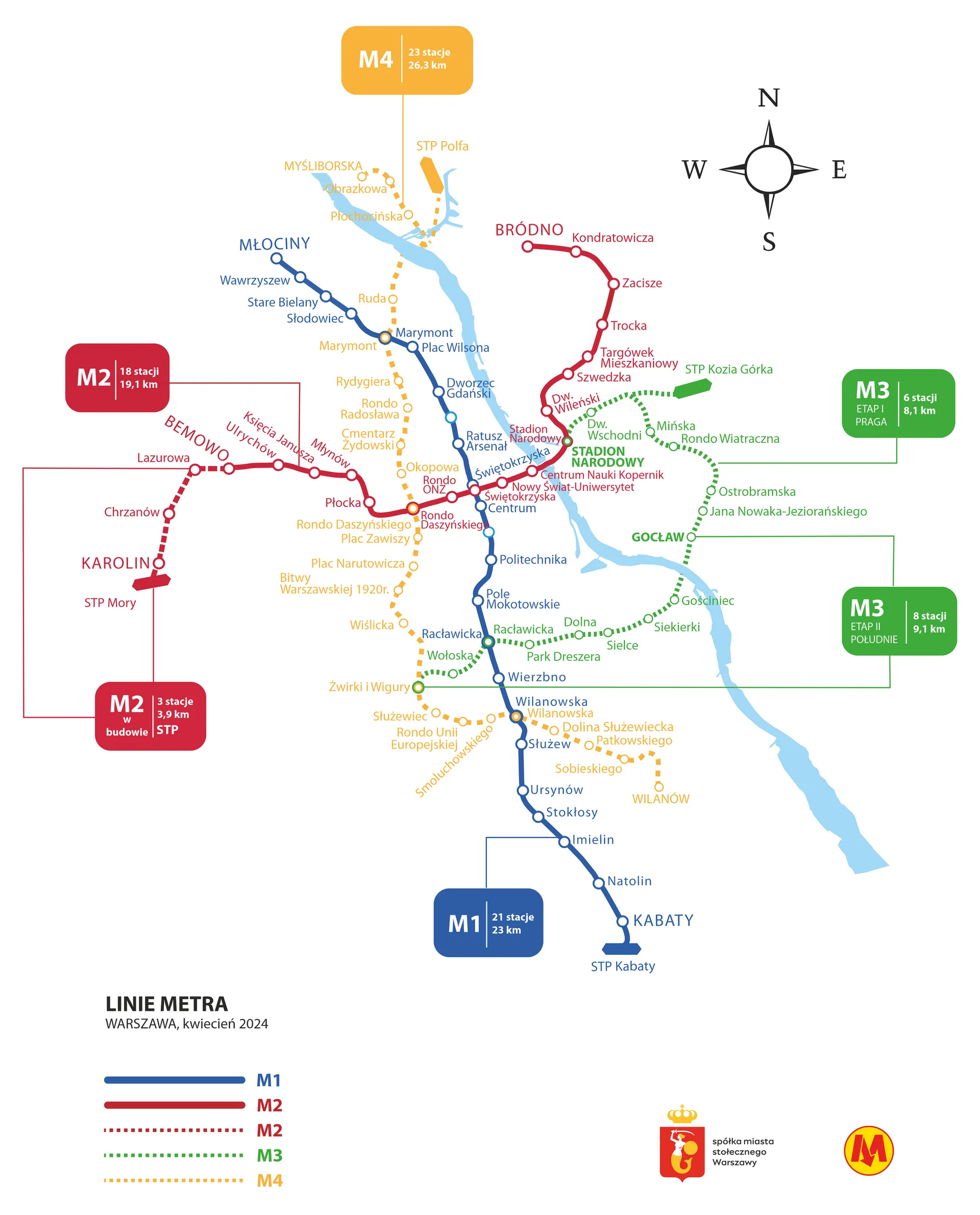
Warsaw Metro Lines, source: https://metro.waw.pl/
The center of Warsaw and nearby towns are served primarily by the Public Transport Authority (ZTM) including:
Metro (lines M1 and M2)
Trams
Buses
Fast Urban Railway (SKM)
In addition to ZTM means, you can move around the region using Mazovian Railways (KM) trains and Warsaw Suburban Railway (WKD) trains.
Tickets
Warsaw operates an integrated ticket system, which means that with one ticket you can use different carriers provided that you travel within the designated zone and depending on the time specified on the ticket. These are tickets honored by ZTM-KM-WKD. Tickets are defined by time and zones.
Ticket zones:
Zone 1 covers the entire city of Warsaw
Zone 2 covers selected towns near Warsaw (e.g. Piaseczno, Legionowo)
A few sample tickets (as of July 2025):
20-minute ticket entitling to unlimited number of journeys up to 20 minutes from the moment of validation, zone 1+2, normal: 3.40 PLN, reduced: 1.70 PLN
single transfer 90-minute ticket entitling to unlimited number of journeys up to 90 minutes from the moment of ticket validation or journey by one means of transport to the last stop/station of the route, zone 1+2, normal 7 PLN, reduced 3.50 PLN
daily ticket (24h) entitling to unlimited number of journeys on all lines within 24 hours from the moment of ticket validation, zone 1, normal 15 PLN, reduced 7.50 PLN
daily ticket (24h) entitling to unlimited number of journeys on all lines within 24 hours from the moment of ticket validation, zone 1+2, normal 26 PLN, reduced 13 PLN
Detailed information about prices and description of individual ticket options can be found on the official website: https://www.wtp.waw.pl/ceny-i-rodzaje-biletow/
ZTM tickets can be purchased at special ticket machines located at tram and bus stops and at metro stations, through mobile applications (mobiWAWA, jakdojade, SkyCash), in validators in trams, buses and SKM trains.
Practical information
It's worth considering buying a daily ticket, thanks to which you can easily travel all day without limit on various means of transport throughout the city, it's a convenient and inexpensive option
The easiest way to get around the city is to use Google Maps to plan routes to specific places, because it shows the shortest and fastest travel options, possible transfers, vehicle numbers and departure times as well as travel time and walking route
What to see
Downtown with Palace of Culture and Science
Let's start from the very heart of Warsaw, the place where tourists most often arrive right after arriving by train or arriving from the airport. The central part of the city is a great base and a point where history meets modernity. If you arrive in Warsaw by train, you will probably get off at Central Station. The station itself may not impress with its design, but it is functional and excellently connected to the rest of the city because you can immediately transfer to the metro, buses or trams. Just a few steps away is the Złote Tarasy shopping center with its characteristic glass roof. It offers a wide selection of shops along with a large dining area. It's a good place for a quick lunch, shopping or coffee between sightseeing.
However, the main tourist point in the city center is the Palace of Culture and Science. This characteristic building from the Stalinist era arouses many emotions among Warsaw residents themselves. This monumental building was donated to Poland by the USSR and built in 1952-1955 in the socialist realist style. Currently, however, it is an important showcase of the capital and is the seat of many enterprises, public utility institutions and cultural venues. It is also a place for organizing many exhibitions and fairs. The building stands out against the background of modern and tall skyscrapers surrounding the central part of the city. Its height is 237 m and it is the second tallest building in Poland. The main attraction is going up to the 30th floor of the Palace of Culture, where there is an observation deck with a panorama of the city. In the middle there is a Gothic hall with a cafe and souvenir shop. An elevator goes to the top, to get there you need to buy a ticket online (https://pkin.pl/), at the box office, or at ticket machines at the entrance. The cost is 28 PLN for an adult, reduced - 23 PLN. On weekends and holidays, queues may form for entry, because two elevators alternately go to the terrace and the number of people staying at the top is limited. The terrace is open from 10:00-20:00, but it's worth following the official website, because sometimes later entries to the terrace are organized, so you can catch the sunset or night panorama of the city. Around the palace there are squares with numerous benches, fountains and various events are often organized. The Palace of Culture and Science building houses museums such as the Museum of Technology, Museum of Evolution, as well as the Congress Hall, Theaters and Cinematheque. On the central square after renovation there is a space with benches, a small observation deck and a massive white building housing the Museum of Modern Art.
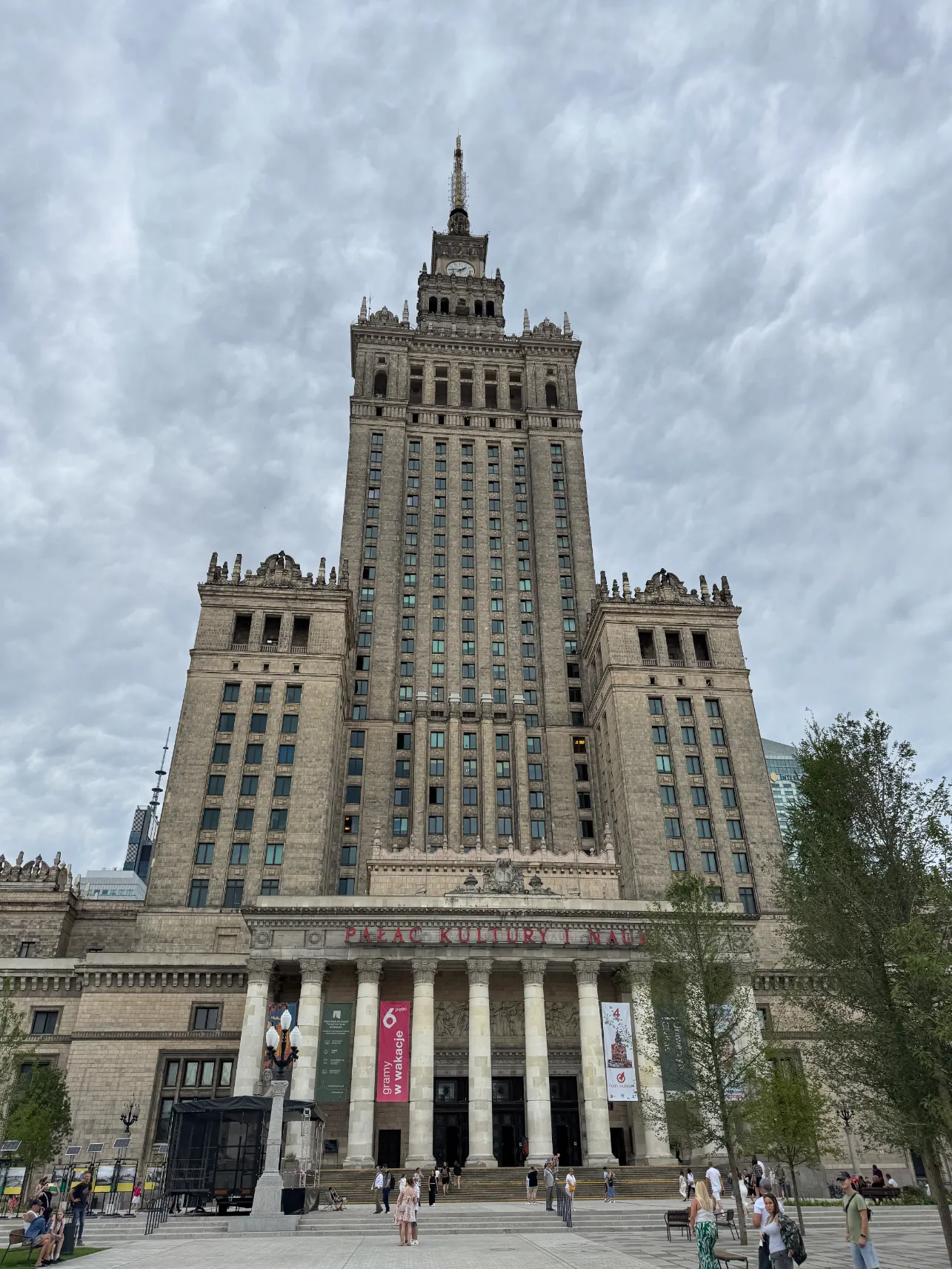
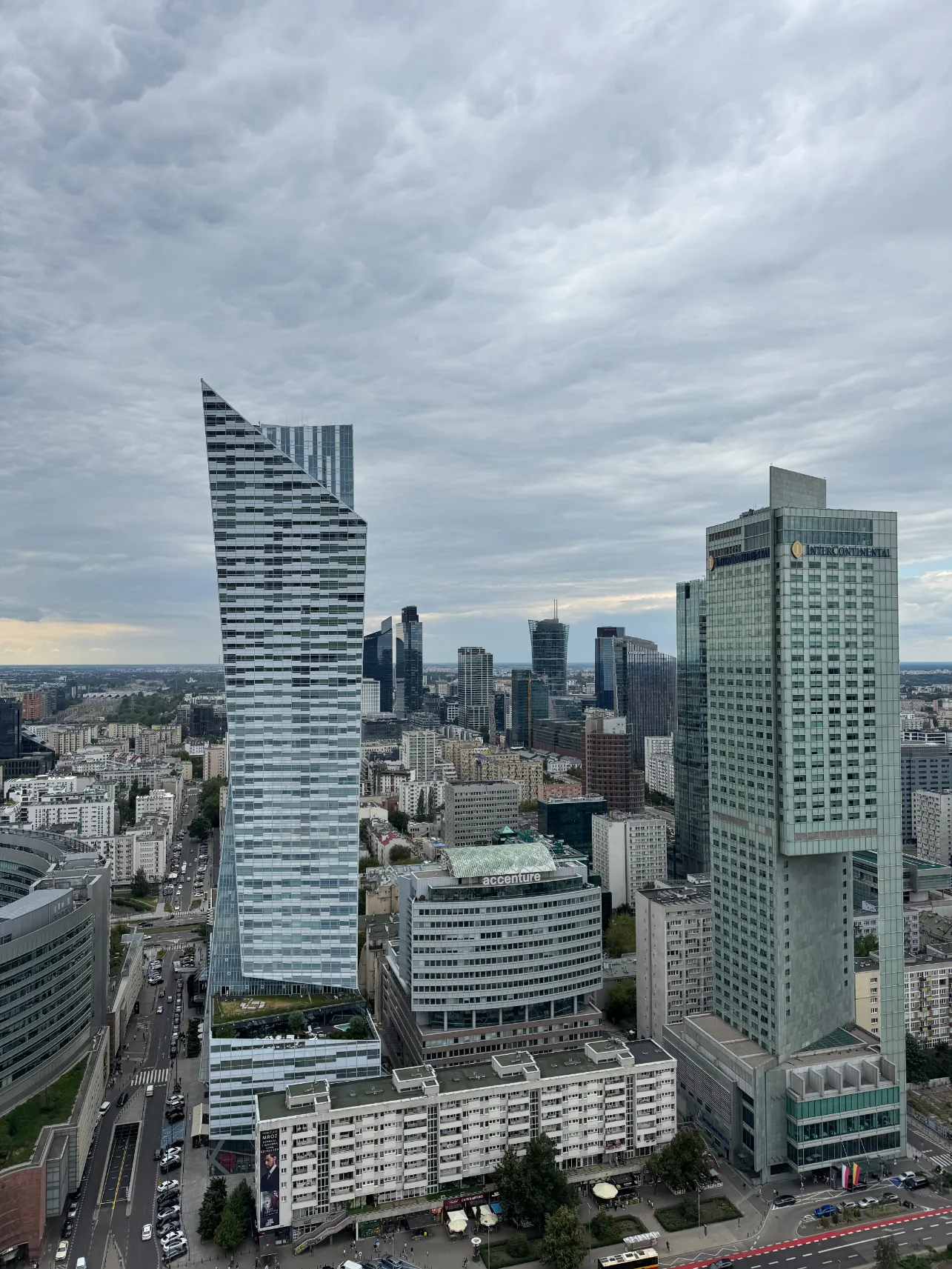
Old Town
Warsaw's Old Town is one of the most important places on the capital's map, not only touristically, but also symbolically. Although it may seem like medieval buildings with a long history, most of what we see today is the result of post-war reconstruction. After the destruction from World War II (about 85% of the Old Town was reduced to rubble), Warsaw almost miraculously rebuilt its history. Thanks to this, Warsaw's old town was inscribed on the UNESCO list as a unique example of cultural heritage reconstruction.
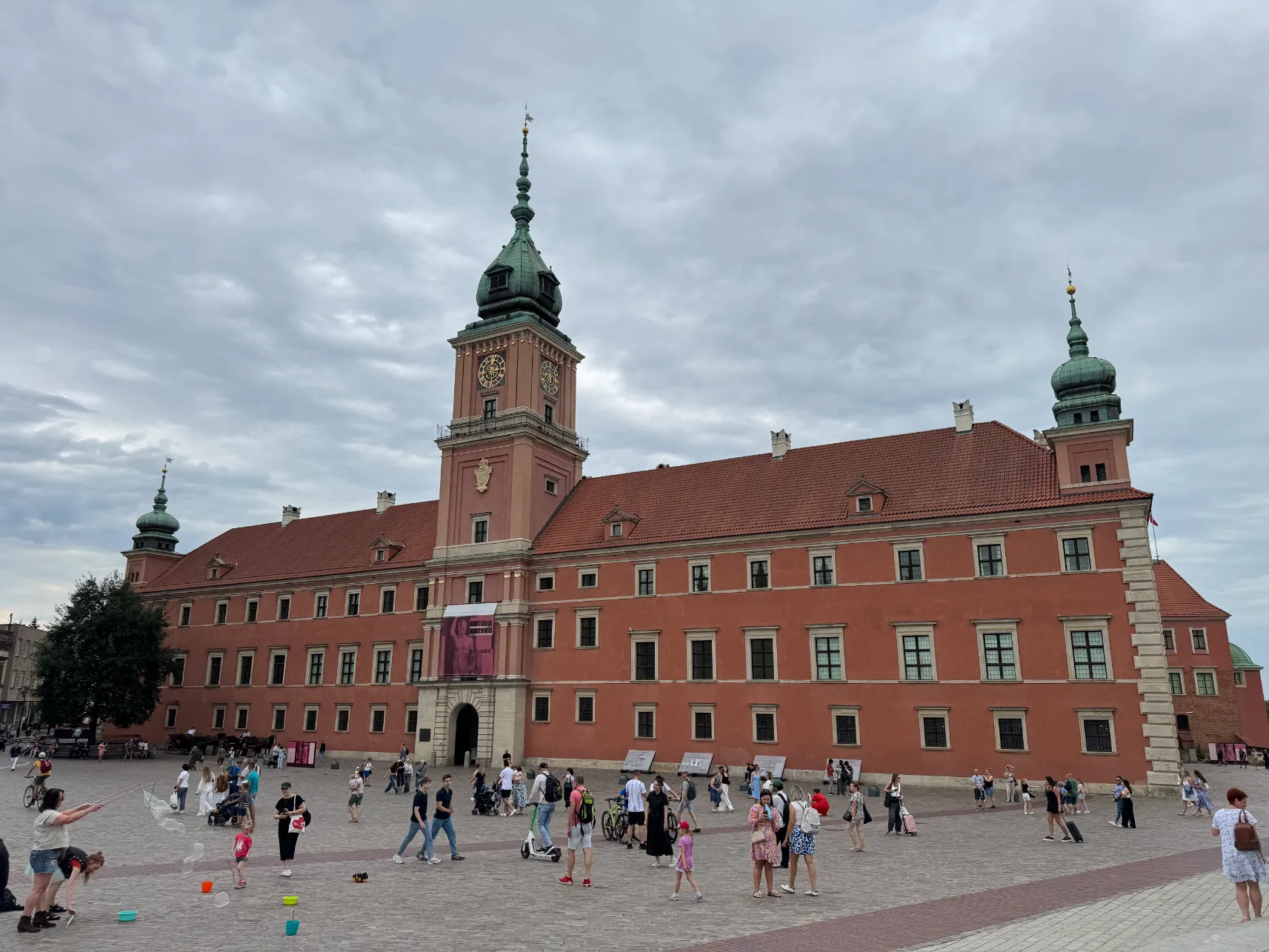
Royal Castle
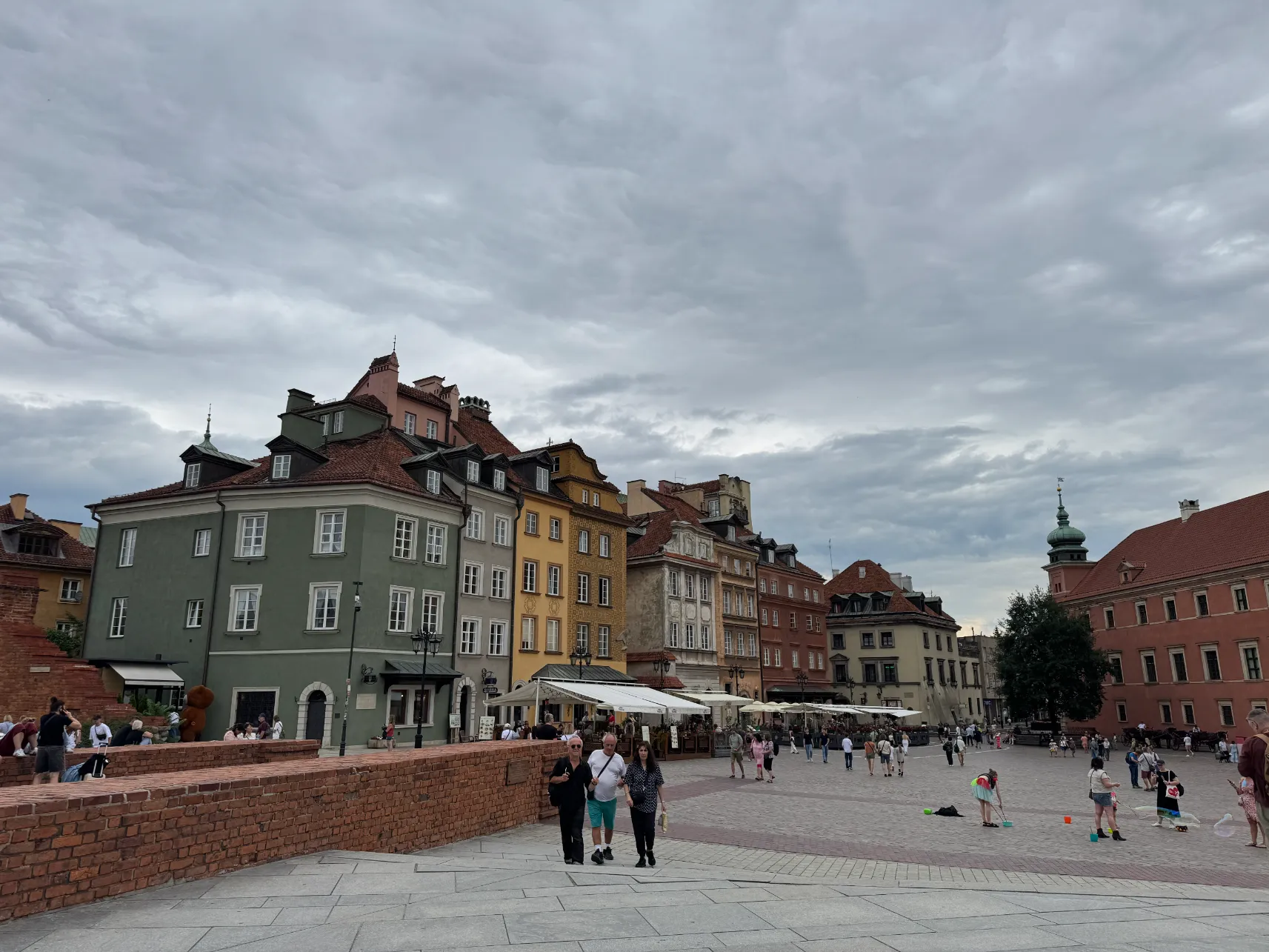
Castle Square
The easiest way to get here is on foot from Krakowskie Przedmieście, heading towards Castle Square. From the Center, it's best to take a bus or tram. Bus stops are located at Teatralny Square and Nowe Przedmieście, as well as trams running along Solidarności Avenue. From the center to the Old Town you can walk in about 20-30 minutes. Nearby there is also the M1 metro station - Ratusz Arsenał, from which you also have to walk a bit.
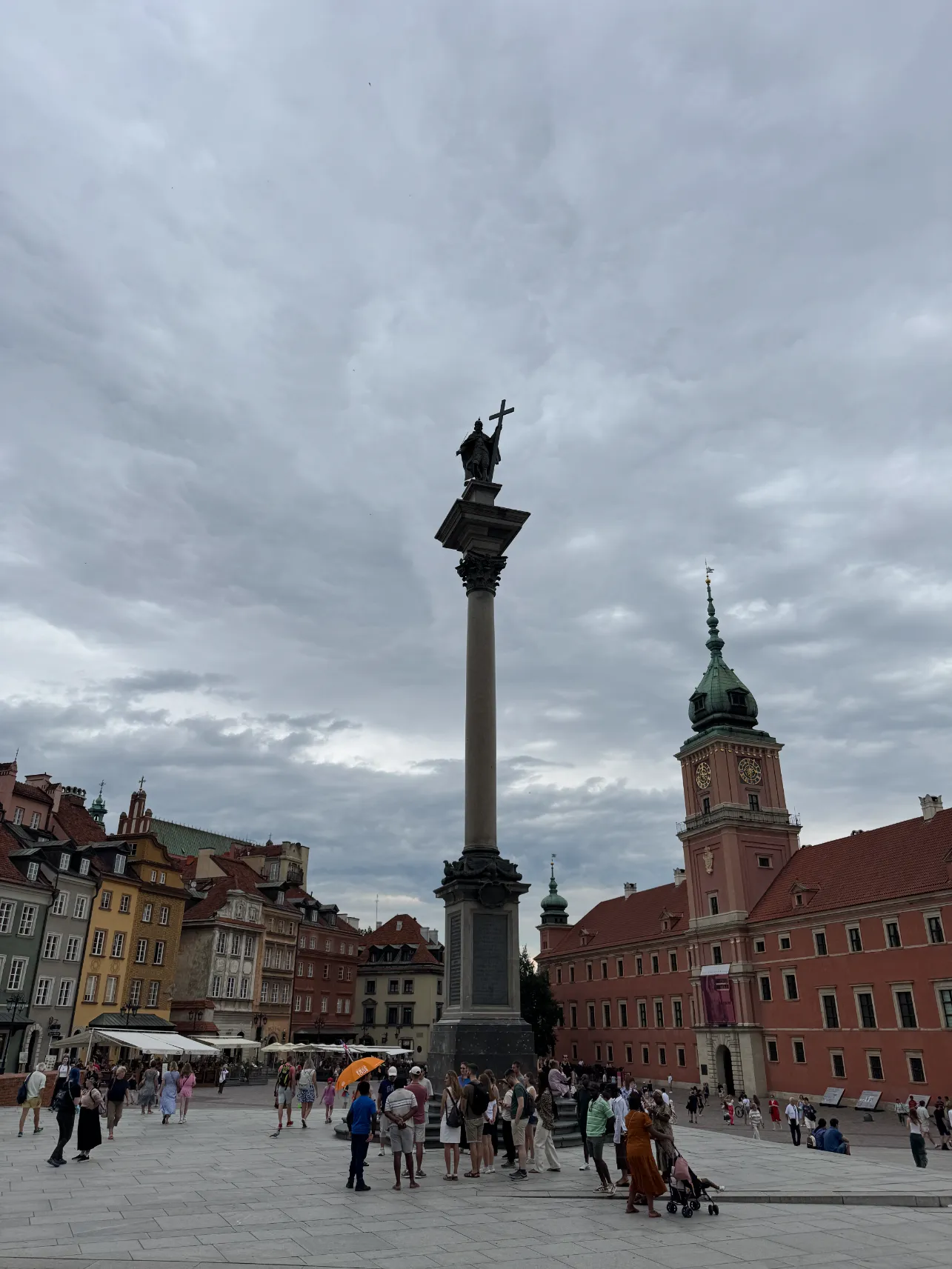
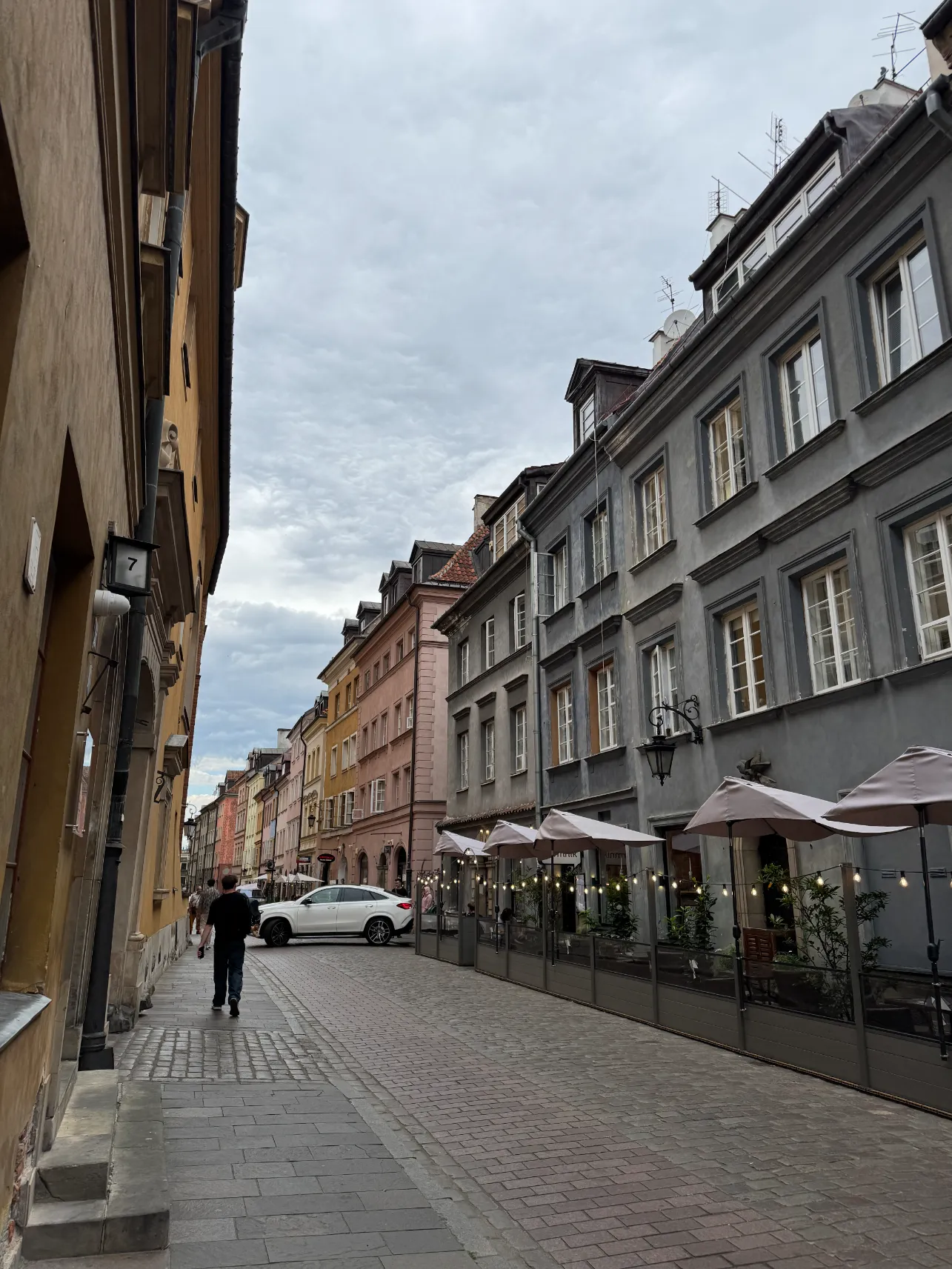
Castle Square is the main entry point to the Old Town. In the center stands the Column of Sigismund III Vasa - the king who moved the capital from Krakow to Warsaw in the 16th century. This is where tourists usually start their walk. The square also houses the Royal Castle, the former seat of Polish monarchs. Currently it serves museum and exhibition functions. Visiting is divided into several parts:
Royal Apartments and Parliamentary Halls, Lanckoroński Gallery, Kubicki Arcades: Tuesday - Sunday 10:00 - 18:00
Palace under the Tin Roof: Wednesday, Saturday - Sunday
Castle Gardens (Lower and Upper): daily 10:00 - 20:00/22:00
temporary exhibitions: Tuesday - Sunday 10:00 - 18:00
Going further into the old town, we reach the Old Town Market Square, the central point surrounded by colorful tenements and cafe gardens. In the middle of the square there is a monument to the Warsaw Mermaid, and right next to it the entrance to the Museum of Warsaw, which allows you to better learn about the history of the city from its beginnings to modern times. The market square is a great place to rest, have ice cream or dinner with a view.
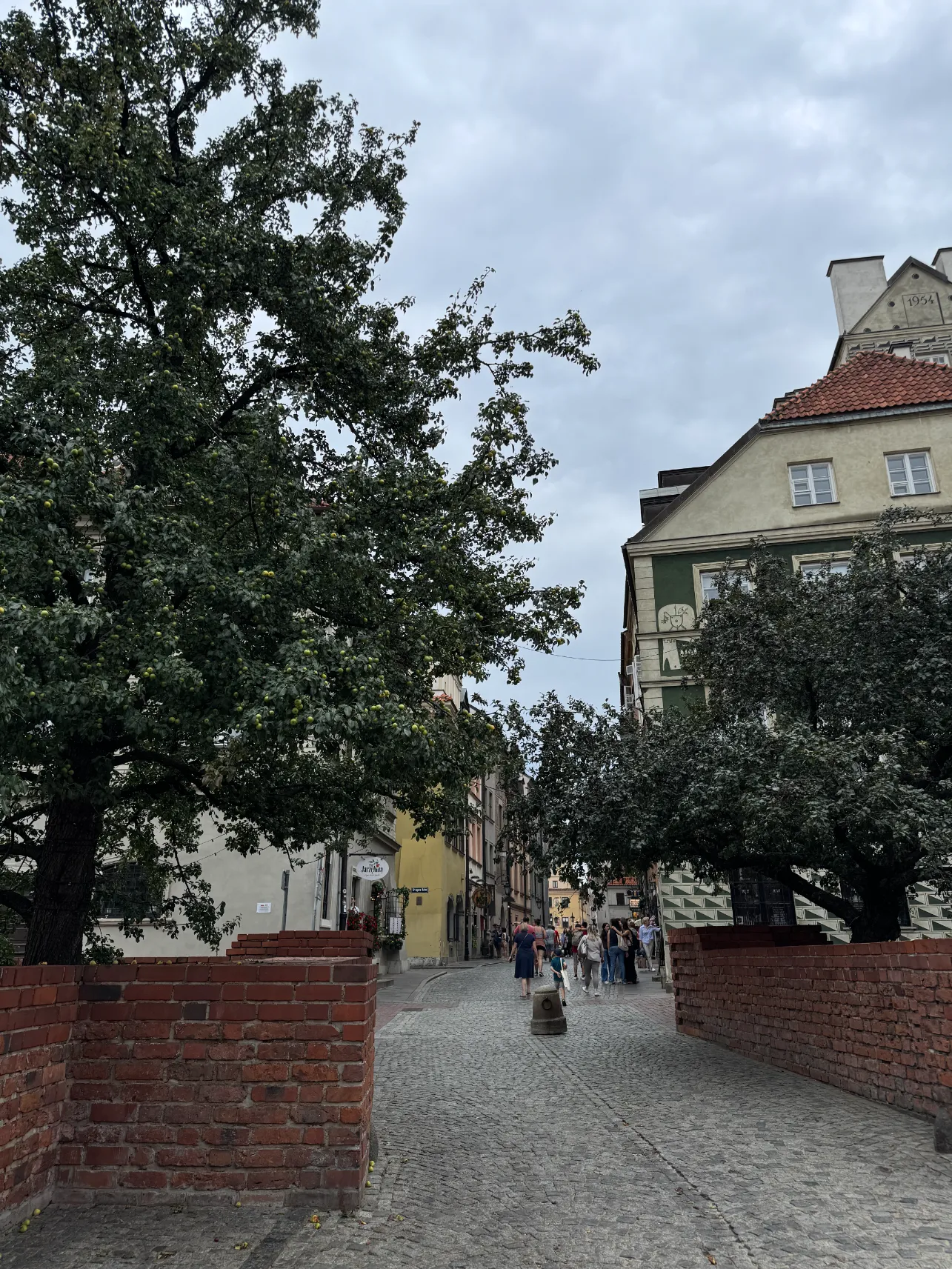
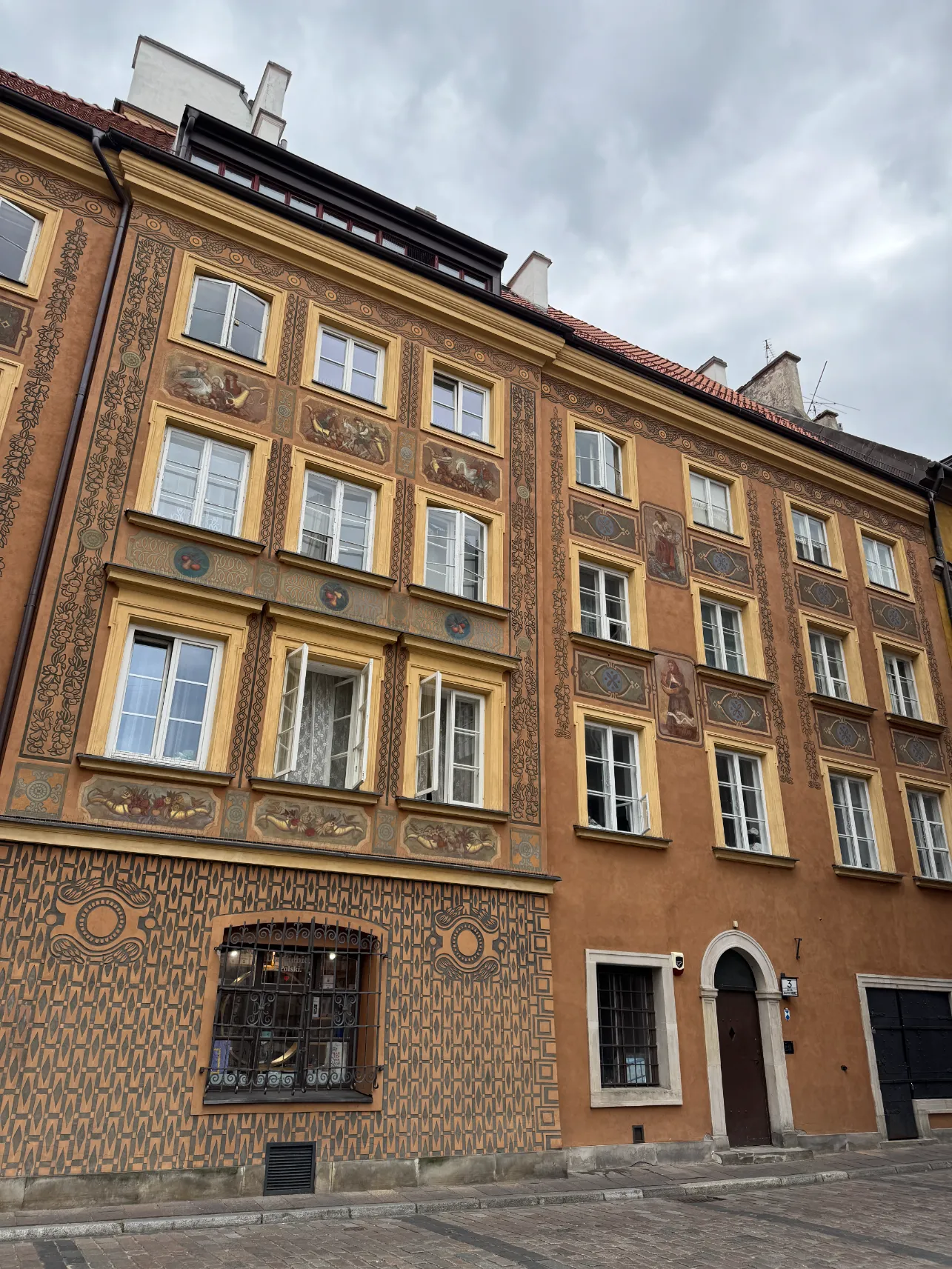
At the northern end of the old town is the Barbican, a fragment of the former defensive walls that protected the city from invasions. This is one of the best-preserved medieval complexes in Warsaw. Today, a walk along the walls is an interesting attraction, especially for children. The area around the Barbican is also full of artists, painters and street musicians. It's also worth wandering around the side streets to see Canon Square with a bell that grants wishes, the Monument to the Little Insurgent symbolizing the memory of the youngest participants of the Warsaw Uprising and many other symbolic elements.
Krakowskie Przedmieście in downtown Warsaw
Krakowskie Przedmieście is one of the most representative streets in Warsaw and at the same time the first section of the so-called Royal Route. This is where history meets everyday life. Elegant tenements house state institutions, universities, churches and atmospheric cafes, and the entire route pulses with the movement of strollers. At Krakowskie Przedmieście 46/48 is the Presidential Palace, the largest palace in Warsaw and the seat of the President of the Republic of Poland. The building has its roots in the 17th century, although it has been rebuilt many times. For centuries it housed, among others, the seat of the Council of Ministers, and since 1994 it has been the official residence of the president. You can only see it from the outside, but it's worth stopping for a moment, especially at the impressive monument to Prince Józef Poniatowski in the courtyard.
Just a few minutes' walk away is Piłsudski Square, one of the most important places of national memory in Poland. Official state ceremonies and military parades take place here. In the center of the square is the Tomb of the Unknown Soldier, a symbolic grave dedicated to those who fell in the fight for independence. It is accompanied by an eternal flame and a 24-hour honor guard of Polish Army soldiers. This is a particularly symbolic place, so it's worth stopping for a moment and feeling its solemn atmosphere. Every Sunday at 12:00 there is a ceremonial changing of the guard at the Tomb of the Unknown Soldier, which is an event that attracts people. Every day the changing of the guard is carried out every hour. After a moment of reflection, we can go further to walk around the Saxon Garden - one of the oldest public parks in Poland. Well-maintained alleys, fountains, sculptures and old trees make it a great place to rest from the urban hustle and bustle. It's especially worth visiting here in summer, because you can spread out on the grass, sit on a bench, use the cafe or just walk and admire the harmonious layout of the park.
New Town Market Square
The New Town began to develop in the 15th century as a separate urban unit, having its own market square, town hall and churches. Over time it was incorporated into Warsaw, and today it forms a quieter and less crowded extension of the Old Town. It's an ideal place for an intimate walk through historic streets, relaxation by the Vistula or visiting less obvious tourist spots. The center of the New Town is the small New Town Market Square with a characteristic well and the Church of St. Casimir, which once served as a mausoleum for sisters from the Sacramentine order. Charming tenements and a peaceful atmosphere make it a good place for a short stop.
Right next to the New Town, towards the river, you will find the Multimedia Fountain Park - a popular attraction especially in summer. In the evenings (usually on weekends, seasonally) spectacular shows of light, music and water take place here. For children it's great fun, and for adults an opportunity to relax with a beautiful view.
Royal Łazienki
One of the most beautiful parks in Warsaw, but also a historic palace and garden complex that combines nature, architecture and art. An ideal place for a longer walk, picnic and rest from the hustle and bustle of the capital. Łazienki was created in the 18th century as a summer residence of King Stanisław August Poniatowski. The central point of the complex is the Palace on the Water, a classicist palace built on an artificial island in the middle of a pond. Currently serving a museum function. It is surrounded by an English-style garden, with alleys, bridges and gazebos. The nearby Myśliwski Palace also attracts attention. The main part of Łazienki is the Royal Garden from the 18th century, but there are also: the Romantic Garden from the 19th century, the Modernist Garden from the 20th century and the Chinese Garden. You can often meet squirrels here, which are already accustomed to human presence and approach curiously, looking to see if someone is pulling out something good for them. Dignified peacocks also walk carelessly around the garden, we managed to meet one. In one part of the garden there is a monument to Frédéric Chopin. Benches are arranged in front of the monument. Roses grow in the garden surrounding the benches. Every Sunday seasonally, concerts of the artist's works take place here. It's worth coming, sitting and enjoying the music.
Entrance to the park is free, open daily at specific hours (depending on the season). Visiting museum objects (Palace on the Water, Orangery, etc.) are paid - prices depending on the object. The easiest way to get here is by buses running along Ujazdowskie Avenues (e.g. lines 116, 180, 195, 222) running to the "Łazienki Królewskie" or "Plac na Rozdrożu" stops. From the center you can walk in about 20 - 30 minutes.
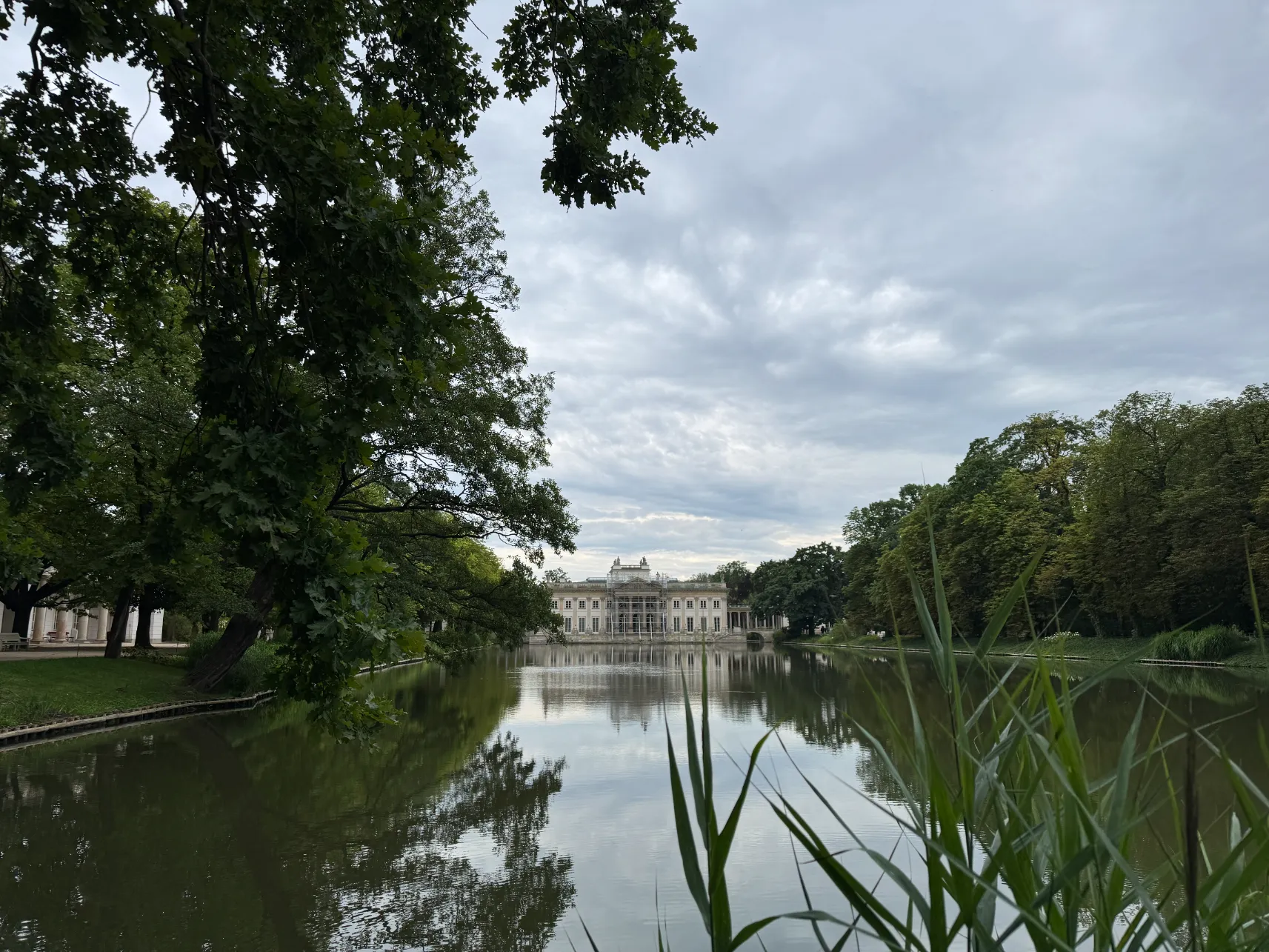
Palace on the Water
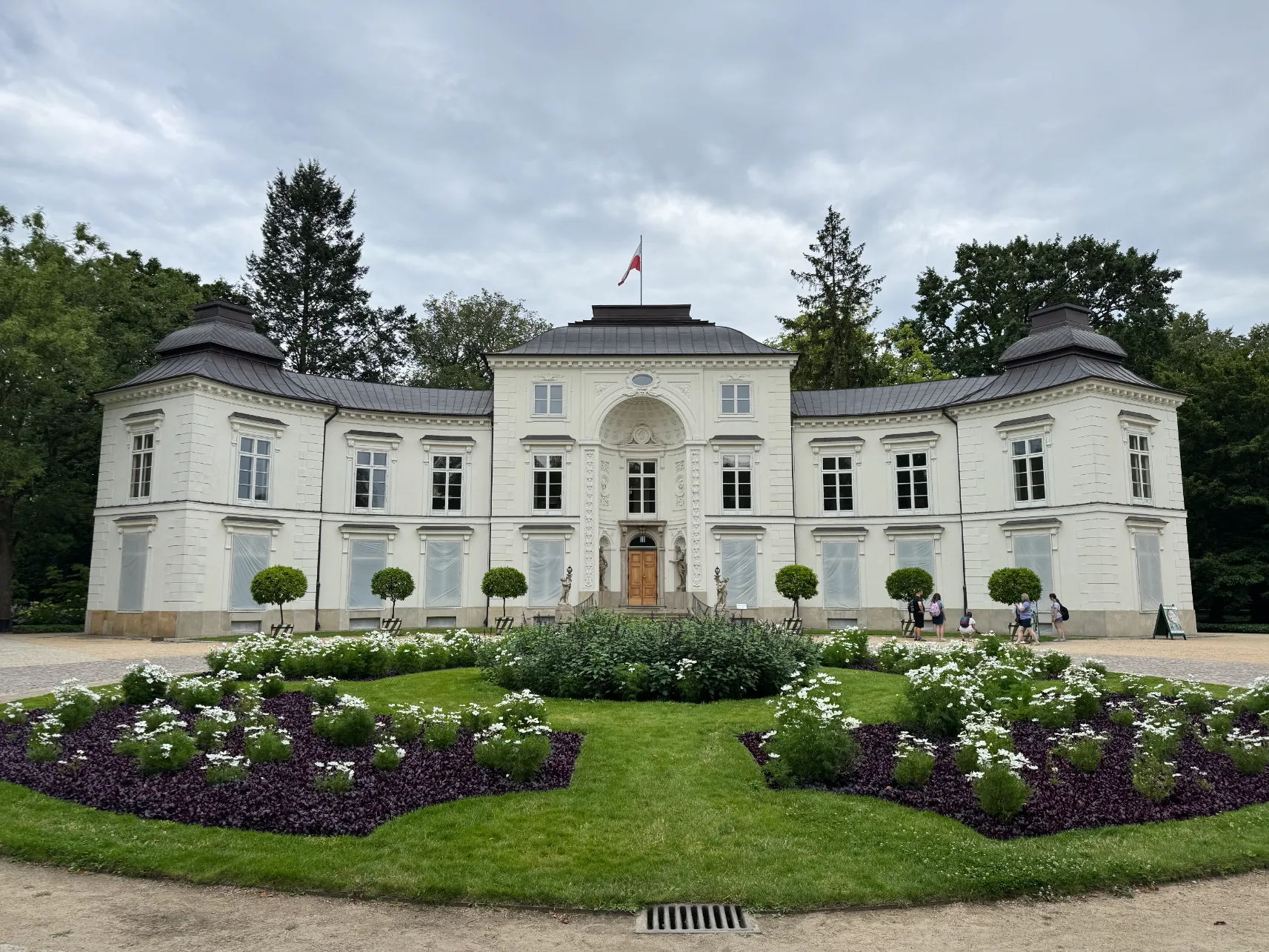
Myśliwski Palace
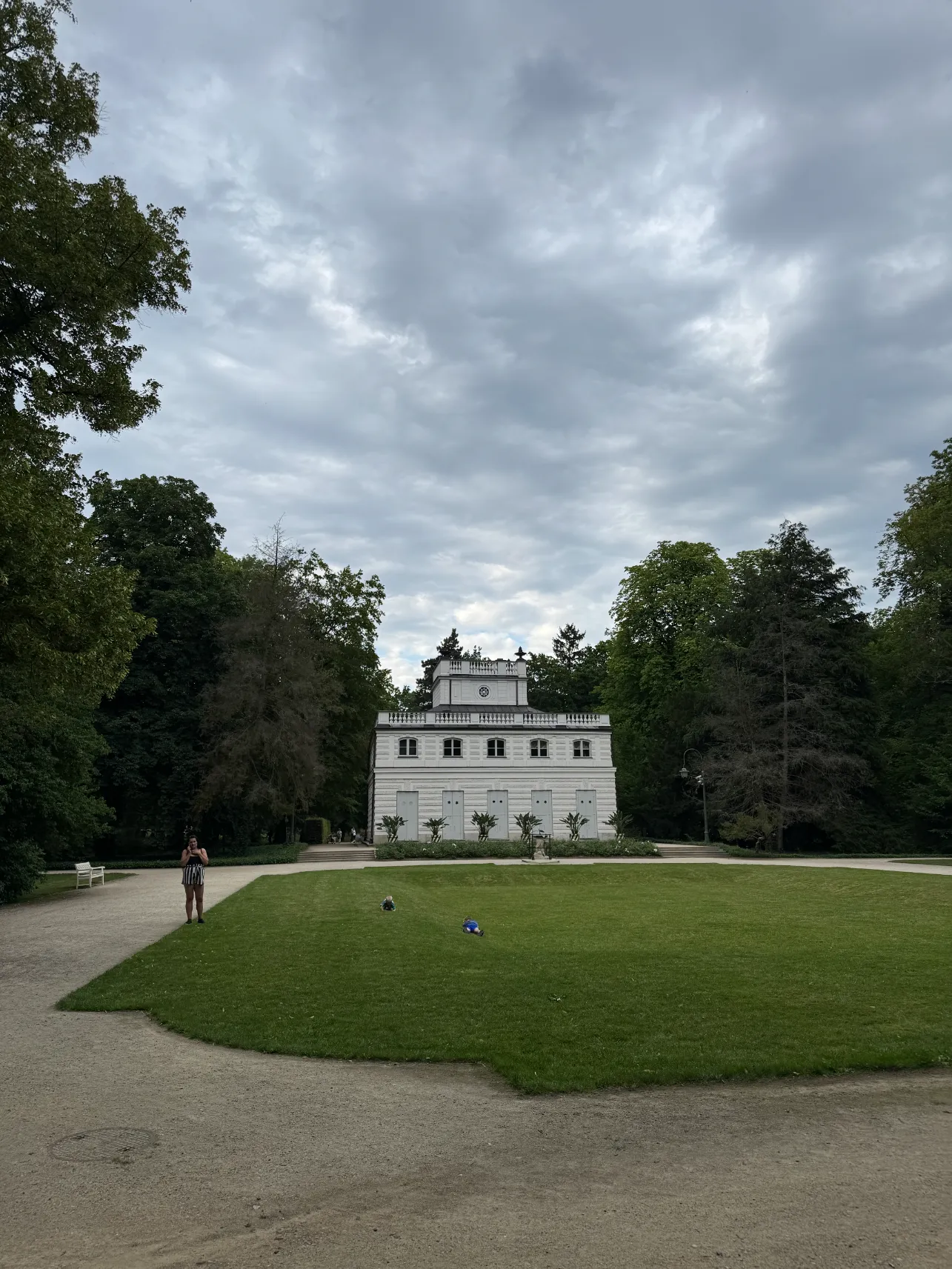
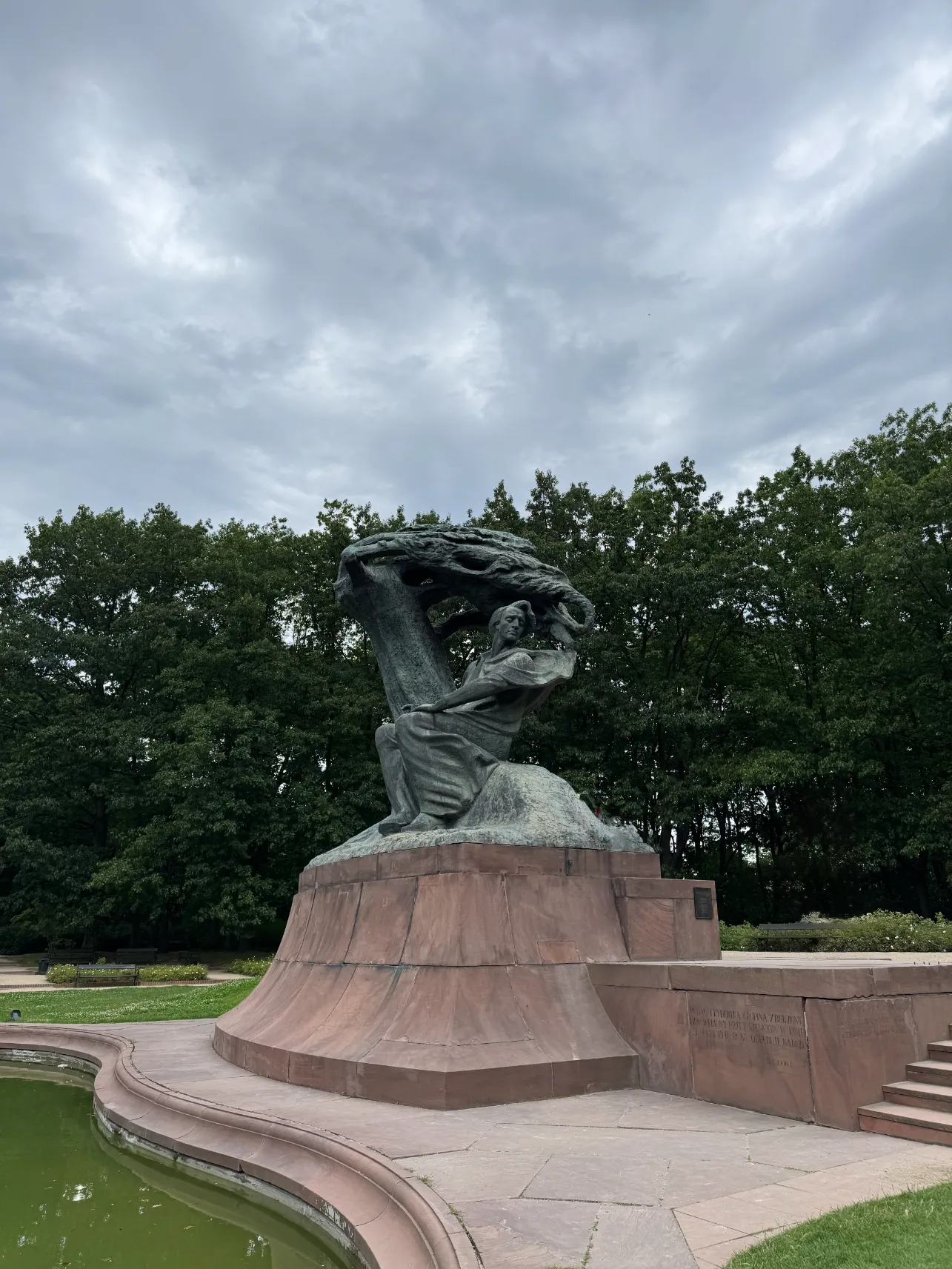
Botanical Garden of the University of Warsaw Library
This is part of the library created at the University of Warsaw, with a huge collection of books and magazines from around the world. The Garden of the University of Warsaw Library (BUW) is a place that combines greenery, architecture and modernity in a unique form. Perfect for a moment of rest from the hustle and bustle of the city, plus with a beautiful view from the library roof of the Vistula, Świętokrzyski Bridge, National Stadium and the panorama of Warsaw's Powiśle. The BUW Garden is one of the largest roof gardens in Europe, covering over 1 hectare. It consists of two parts: lower (surrounding the building) and upper (on the roof) and both are available to visitors. You will find bridges, pergolas, water reservoirs, viewpoints, as well as lush vegetation that changes with the seasons.
The garden is open from spring to autumn (in summer season usually 8:00 - 20:00, but it's worth checking earlier). Admission is free. In case of rain and strong wind, the roof part may be closed for safety reasons.
The garden is located on the roof of the modern seat of the University of Warsaw Library at ul. Dobra 56/66, right next to the UW campus and Vistula boulevards. You can easily get there on foot from Krakowskie Przedmieście or the Old Town (about 15 minutes on foot).
Vistula Boulevards
Located along the left bank of the Vistula, from the Śląsko-Dąbrowski Bridge to the vicinity of the Copernicus Science Centre, they have become a favorite meeting place for Warsaw youth and not only, because probably everyone associates Warsaw steps. The boulevards along the Vistula are filled during the day until late evening. The wide promenade is conducive to walks or cycling. In warm summer evenings it fills with young people. Along the promenade in season, many mobile bars with snacks, drinks and craft beer, food trucks with burgers, Asian cuisine, vegan wraps or pizza are created, plus deck chairs, picnic tables and music. On many sections of the boulevards there is an exemption from the ban on alcohol consumption, which additionally promotes integration and free meetings. Unfortunately, this also has negative sides. Despite a large number of trash cans, in some places the boulevards are quite littered by uncultured people.
On the Boulevards we will also find the characteristic symbol of Warsaw - the mermaid. The figure of half woman, half fish with a sword is still found in the capital's coat of arms. The monument is located near the Świętokrzyski Bridge, right next to the Copernicus Science Centre.
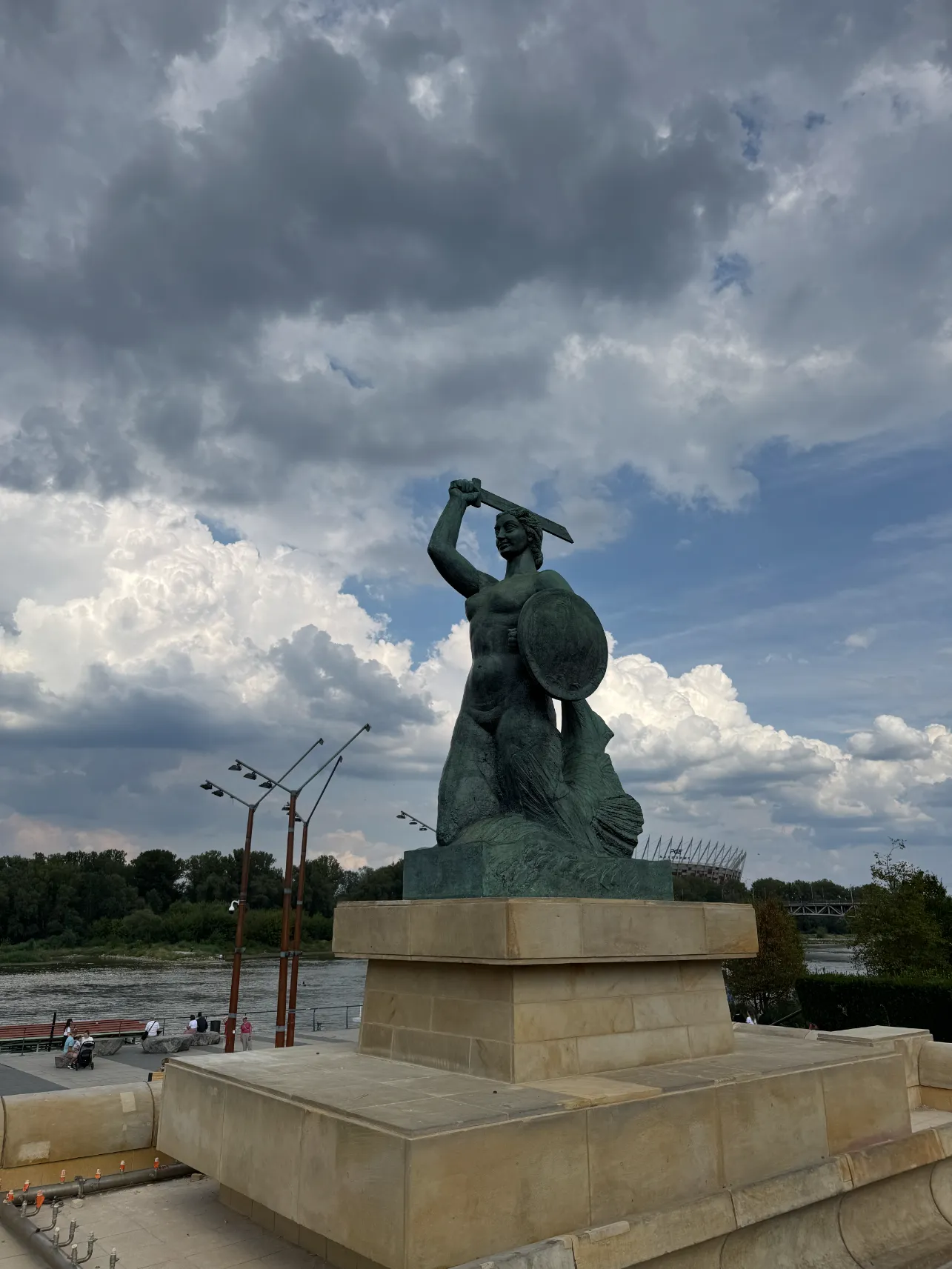
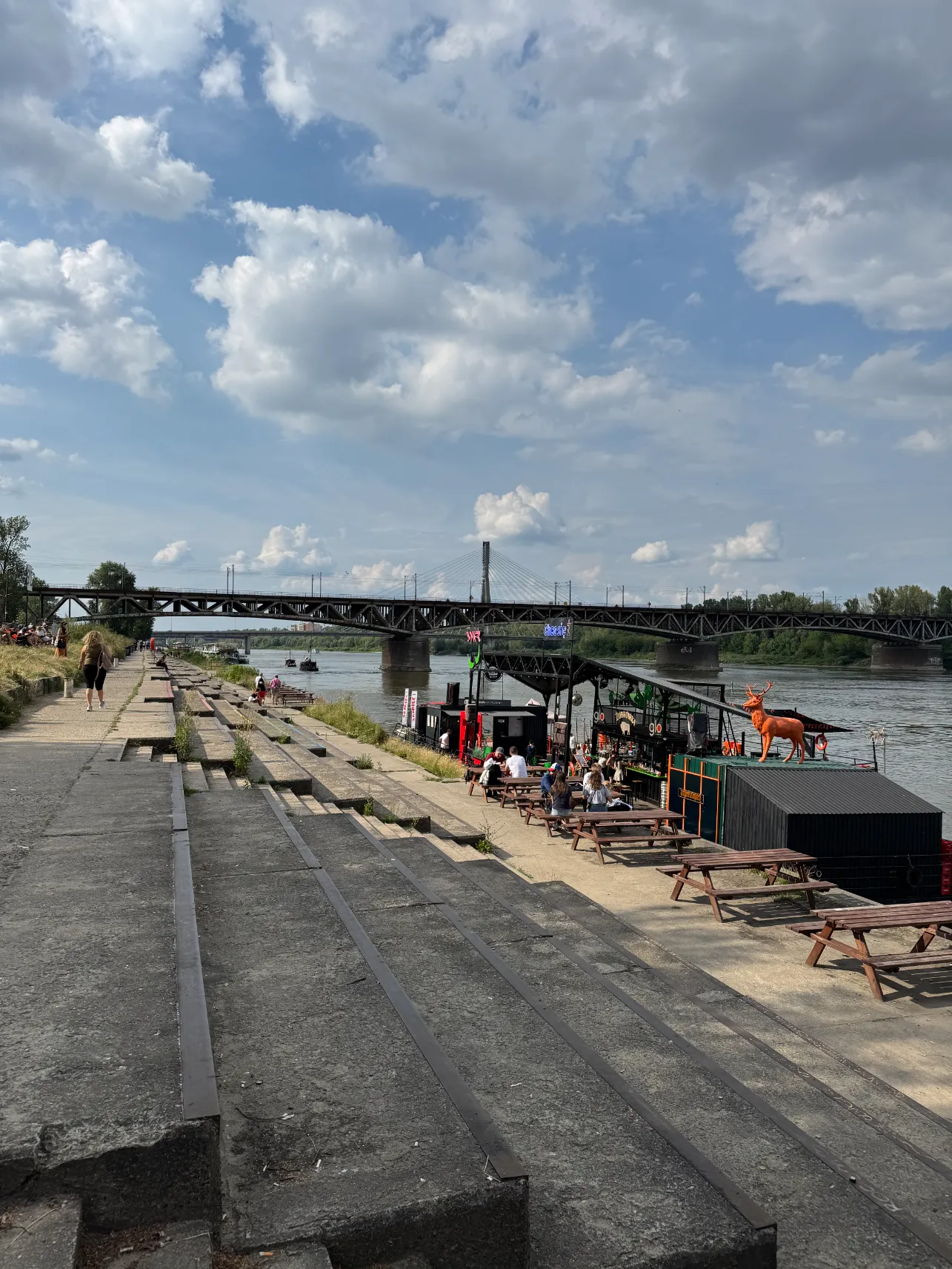
National Stadium
Officially the National Stadium named after Kazimierz Górski, and since July 2015 it operates under the sponsor name PGE Narodowy. It's a modern, multifunctional facility in Warsaw that, in addition to football matches, also hosts competitions in other sports disciplines, concerts and numerous cultural and entertainment events. The stadium is located on the right side of the Vistula, but its characteristic shape is visible from many points in the city center. PGE Narodowy is the largest stadium in Poland and one of the most technologically advanced facilities of this type in Europe. The facility can also be visited with a guide who shows you around the players' locker rooms, VIP zones, stands and media rooms. Link to tickets and current events as always we throw you here - https://wycieczki.pgenarodowy.pl/trasy.
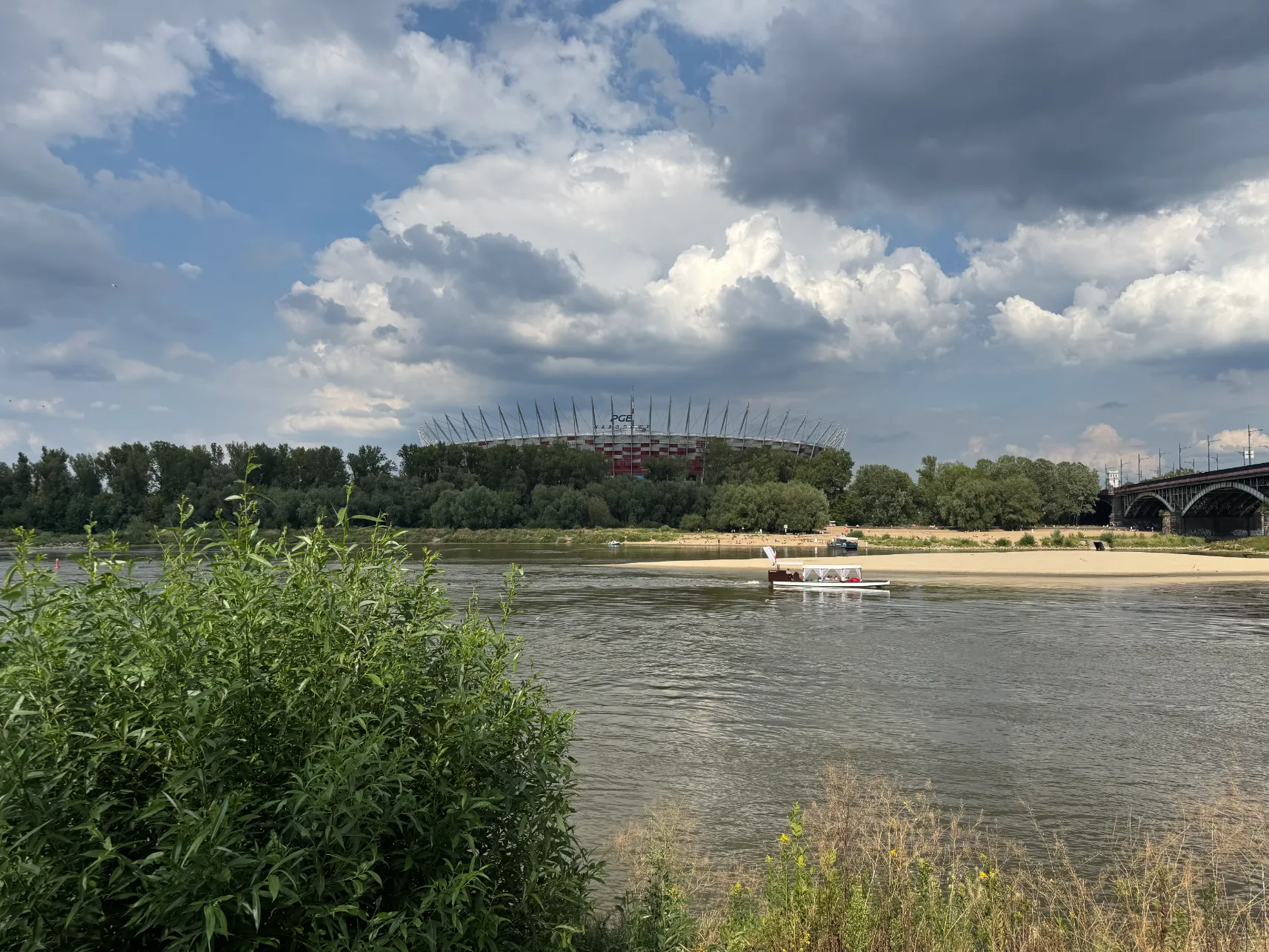
Warsaw Uprising Museum
The constantly beating heart of the Warsaw Uprising literally and figuratively. Inside, a symbolic sound resembling a heartbeat resounds. This is a tribute to those who fought and died, and those who managed to survive. The exhibition is extensive and makes a huge impression. This museum not only tells about history, but engages in it through numerous photos, films and exhibits that can be touched. Inside you will find, among others, archival photos, films, letters and weapons from World War II, a realistic reconstruction of the sewers through which the insurgents moved, a replica of the Liberator plane that was used for supply drops, and in front of the building the Wall of Memory with over 10 thousand names of the fallen. The museum enjoys enormous interest, especially on weekends. Therefore, it's worth buying tickets online in advance. Even then you have to count on a moment of waiting to enter (unless you choose the option with a guide at a specific time). If you care about a deeper understanding of the context, then visiting with a guide is a great option. The guide will take you through the most important elements of the exhibition, share stories that you won't find on the plaques and show how the Uprising affected Warsaw's fate. Such a visit can take up to 2.5 hours, but it's definitely worth it. Ticket prices, opening hours and upcoming events at the museum can be found on the official website - https://www.1944.pl/. On the 4th floor of the museum there is an observation deck that you can reach by elevator. The museum is located at ul. Grzybowska 79, in the Wola district, only 10 minutes by public transport from the center. The easiest way to get there is by metro (Rondo Daszyńskiego station) or by tram, from where a short walk to the museum awaits you.
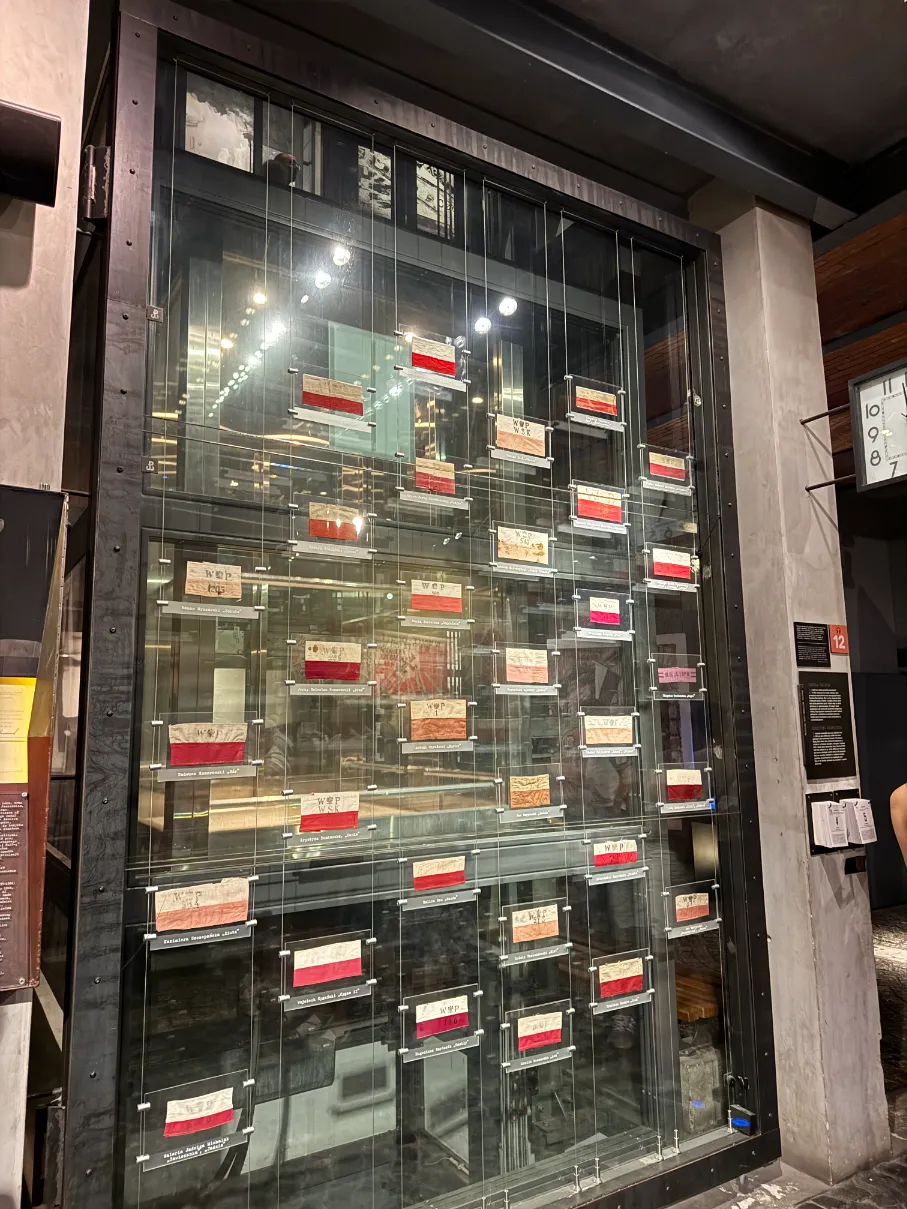
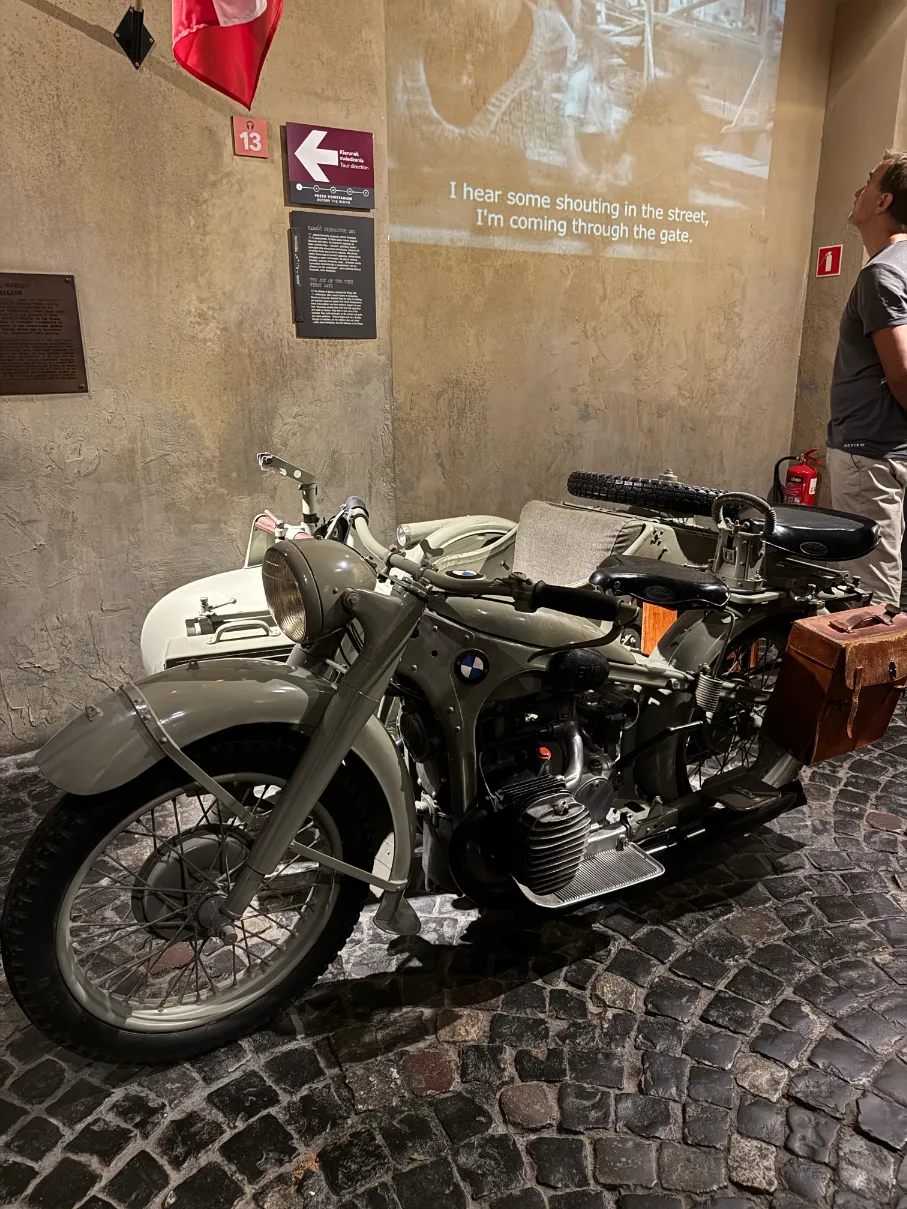
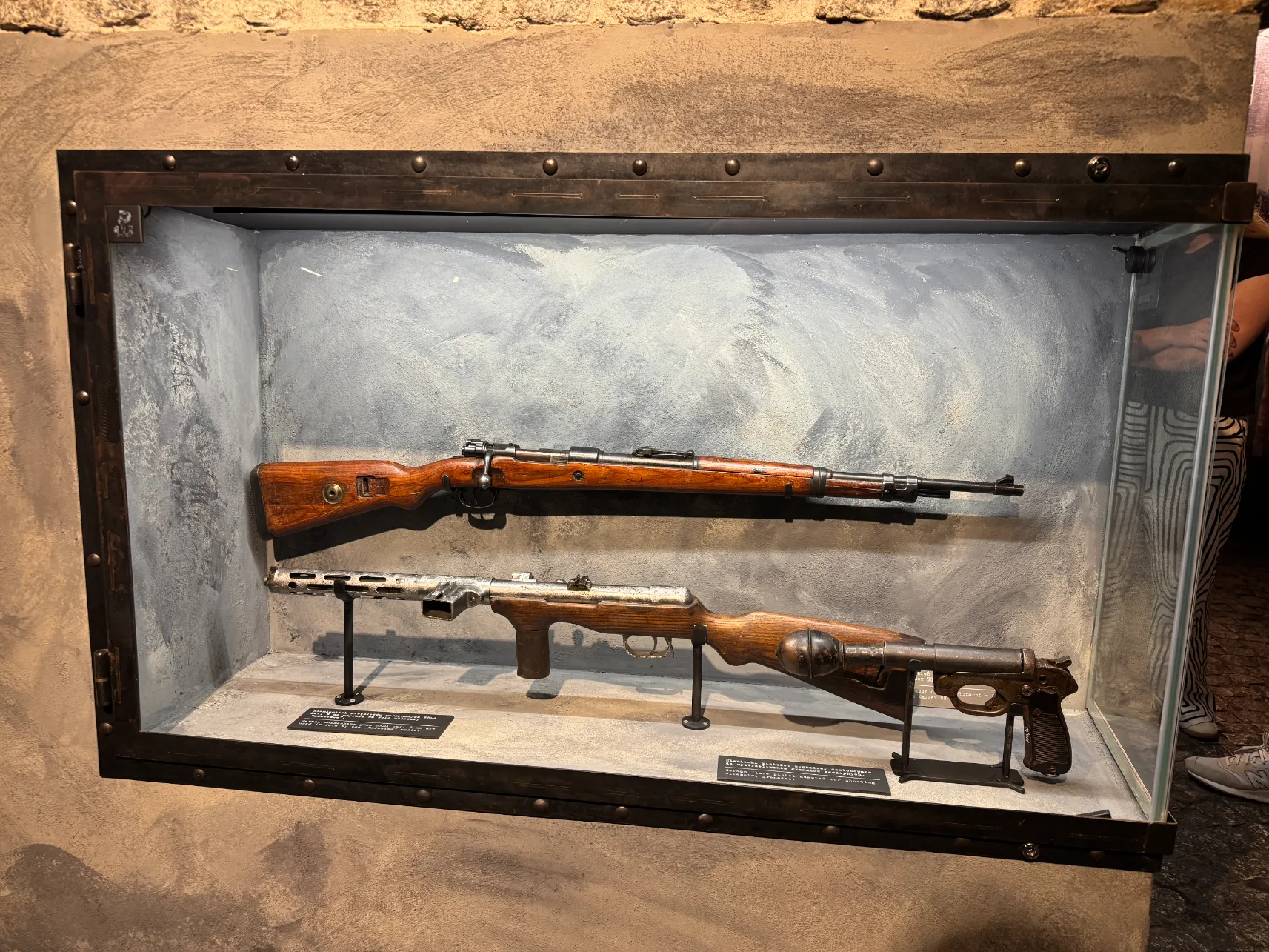
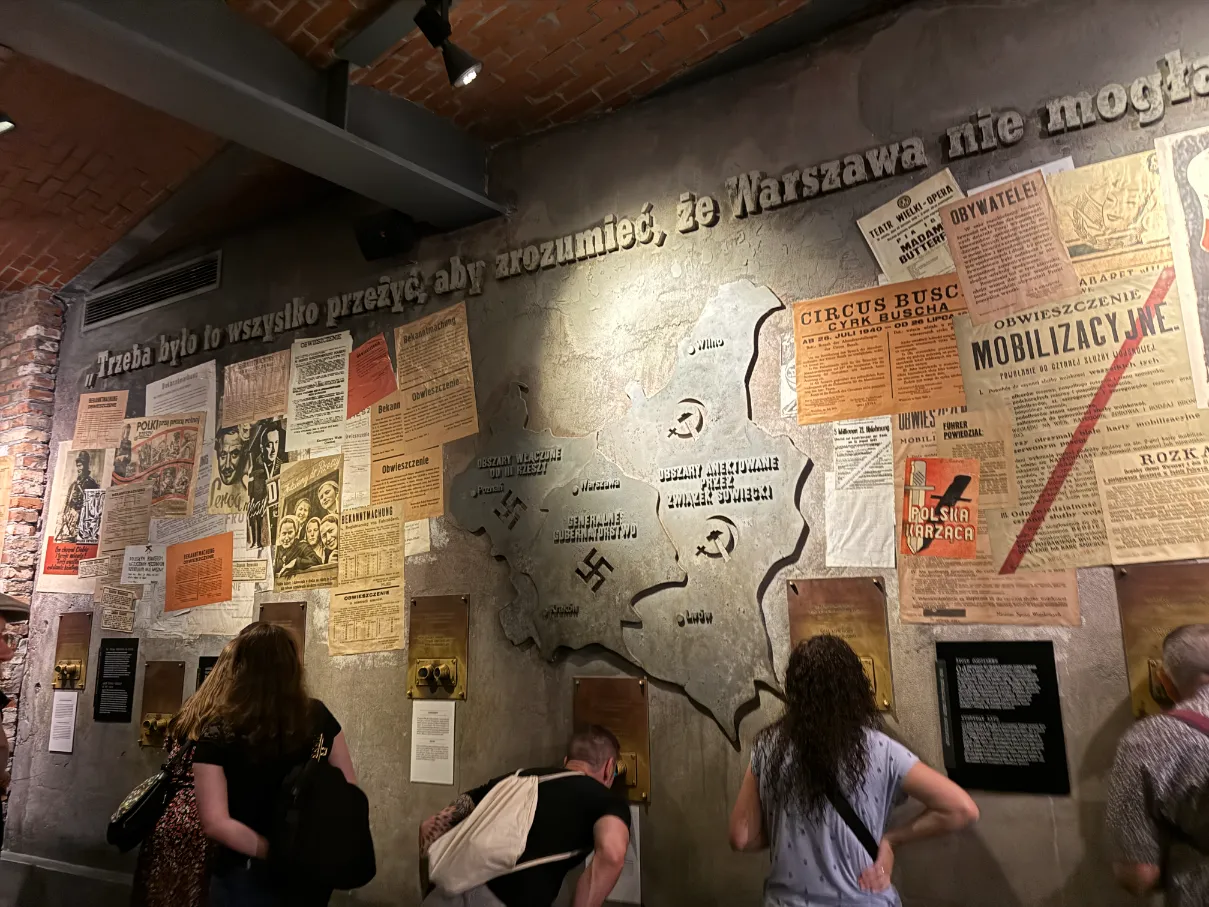
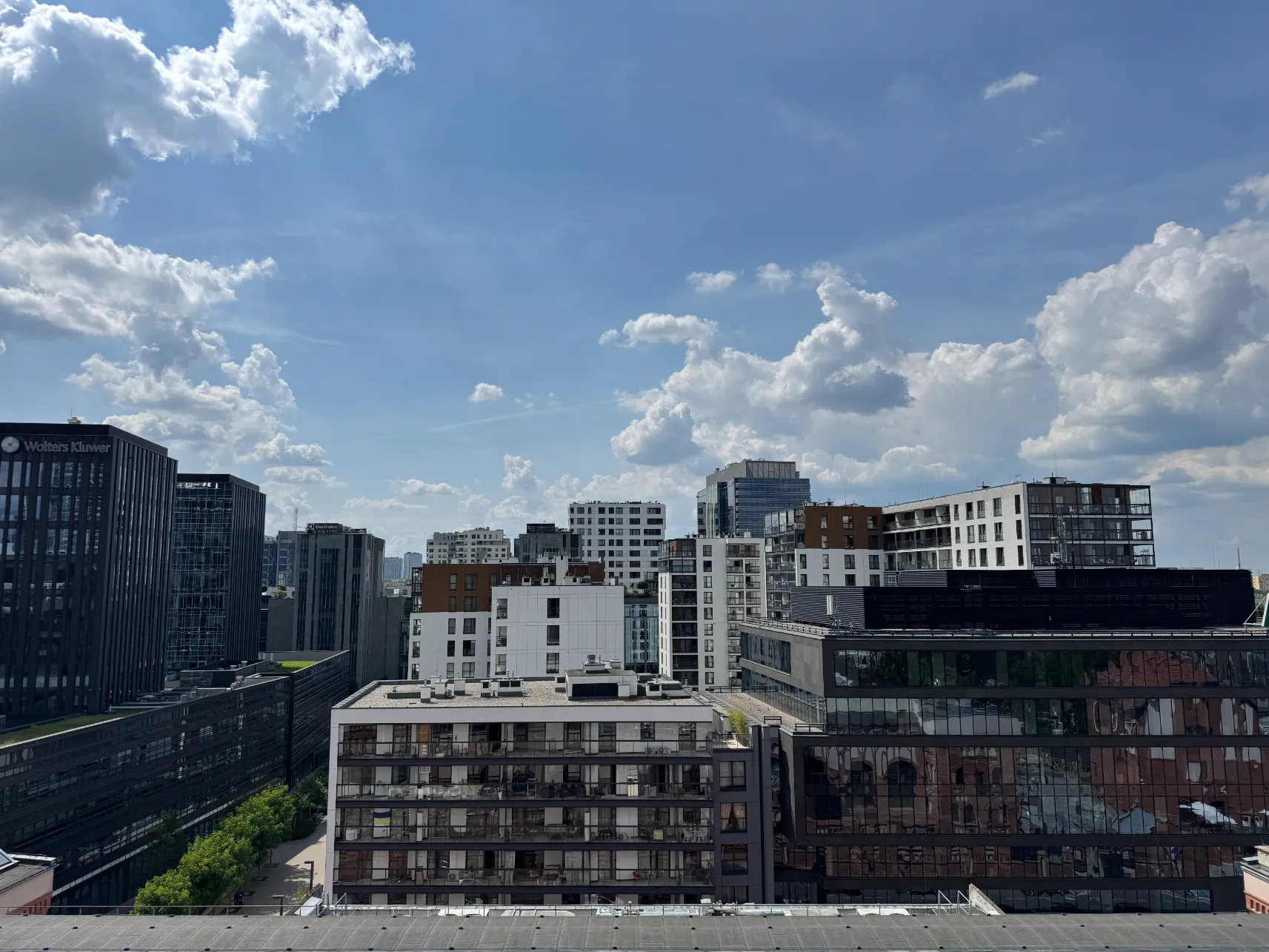
View from the terrace
Copernicus Science Centre
This is one of the most modern science centers in Europe and undoubtedly one of Warsaw's biggest attractions for both children and adults. The Copernicus Science Centre is a place where you can touch, check, activate and... simply play with everything. Science is shown here in the form of interactive experiences. And inside there are over 400 interactive exhibits from fields such as physics, biology, mathematics, engineering, various thematic zones including Human and Environment, Light Zone, Bzzz! for the youngest, as well as live science shows, experiments and mini workshops. It's best to buy tickets online in advance, especially in season and on weekends, because places sell out quickly. We're throwing you a link to the official website where you can buy tickets - https://www.kopernik.org.pl/. It's worth planning at least 2-3 hours for visiting and experiencing. It's an ideal proposition for bad weather for anyone who likes to explore the world through experience or creative spending of a day in Warsaw.
Where to eat
Warsaw does not disappoint culinary-wise in terms of flavors, especially if you are fans of Asian cuisine. Below are three places that we tested and can honestly recommend to anyone looking for good food in an atmospheric atmosphere:
Arigator Ramen Shop - for people who like Japanese cuisine. This is one of those places that has a cult reputation - and quite deservedly. Arigator serves ramen in various variations, but you will also find Japanese appetizers and desserts here. The place is not too big but very atmospheric and often filled. Ul. Piękna 56, Warsaw
Uki Uki Krucza - an inconspicuous place on Krucza street that hides one of the best udon in the city. Pasta made on site, broths full of flavor, plus simple, consistent decor. The place has a regular group of fans, so it can be crowded during lunch hours. Ul. Krucza 23, Warsaw
UKIM - Asian restaurant offering meats, pasta, rice as well as soups prepared in true Asian style. The place is spacious and modern with a garden on a quiet street. Perfect both for lunch and evening outings in the city. Ul. Chłodna 2/18, Warsaw
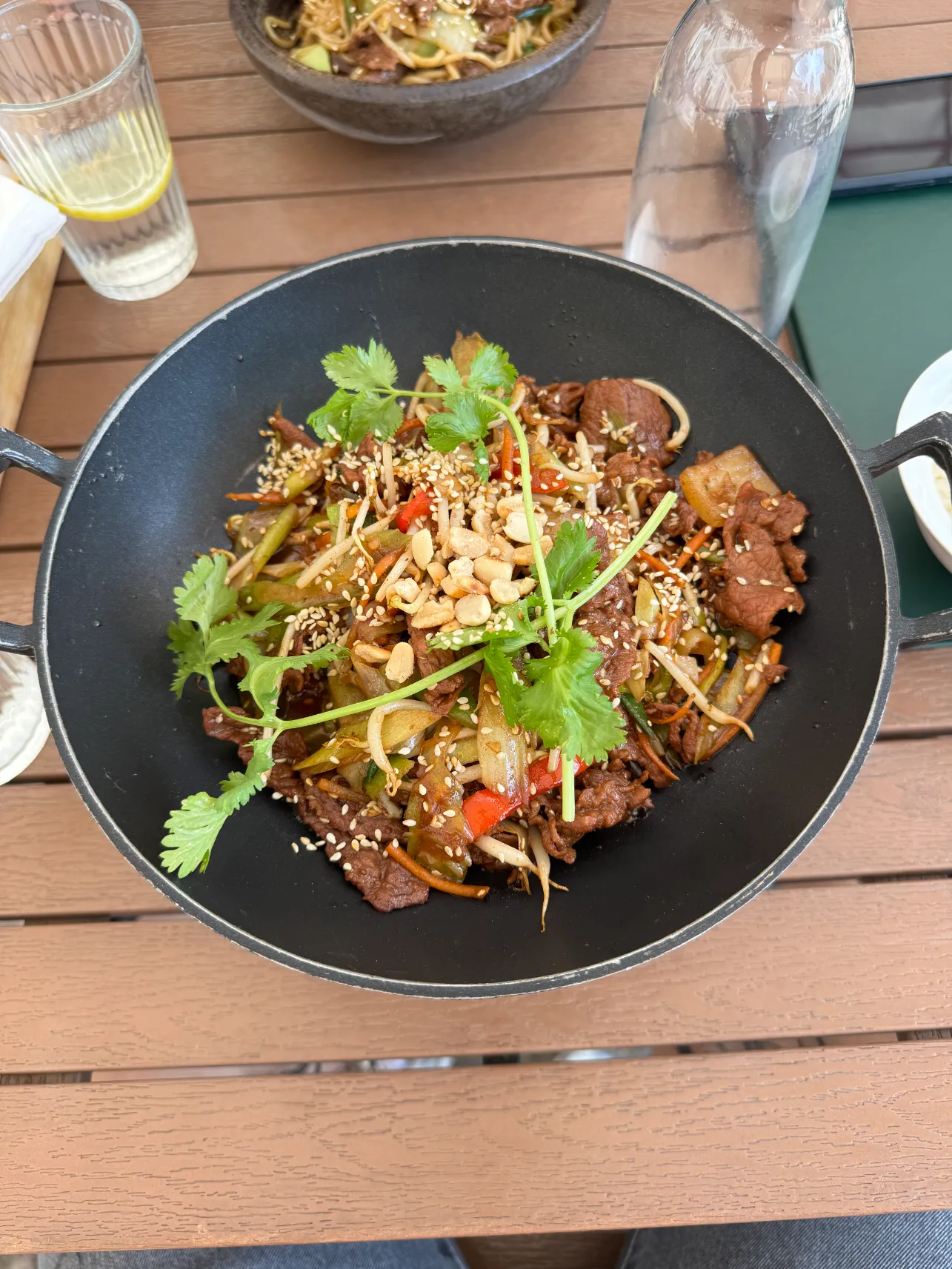
Beef served with rice - UKIM restaurant
How to spend an evening in the capital
Being in Warsaw in the late afternoon, we weren't really looking for places to party, but rather we cared about atmospheric places where you can sit, drink something good and catch the city vibe in the evening. And these are exactly the places we want to share with you.
A popular place among Warsaw residents are the Boulevards along the Vistula. In addition to a great recreational area, there are also gastronomic points offering both drinks and snacks. At seasonal stalls there are chairs, benches and deck chairs, but customers often use the concrete steps right above the river. A favorable situation is the fact that along the entire length of the boulevards there is an exemption from the ban on consuming alcoholic beverages, so you can legally drink beer or a drink in the fresh air. On warm summer evenings, the Boulevards are filled with young people spending time with friends and music from pubs often plays in the background.
Another gastronomic zone, contrary to its name, filled with restaurants, cafes, pubs and of course breweries are the Warsaw Breweries. It is located at ul. Grzybowska 60 and works great for an evening out: regardless of whether you feel like dinner, craft beer, a cocktail or just a pleasant evening in a well-arranged space. The place is well-maintained, green and modern - and the choice of venues is really wide.
We can recommend a few more pubs closer to the center. If you like the Pinta brand, you must go to its venue. There are two Pinta pubs in Warsaw, on Nowogrodzka 4 (we managed to visit this one) and on Chmielna 7/9. At Pinta Warsaw Craft Beer & Food you can both eat burgers or Mexican snacks, and drink many craft beers from taps and bottles. The place on Nowogrodzka that we visited is interesting and pleasant to sit with friends. There are also tables in front of the venue if someone prefers to sit outside. On the same street there are also other venues that we can recommend: Kufle i kapsle Nowogrodzka and Jebeerwocky Craft Beer Pub, which also serve interesting craft beers from taps.
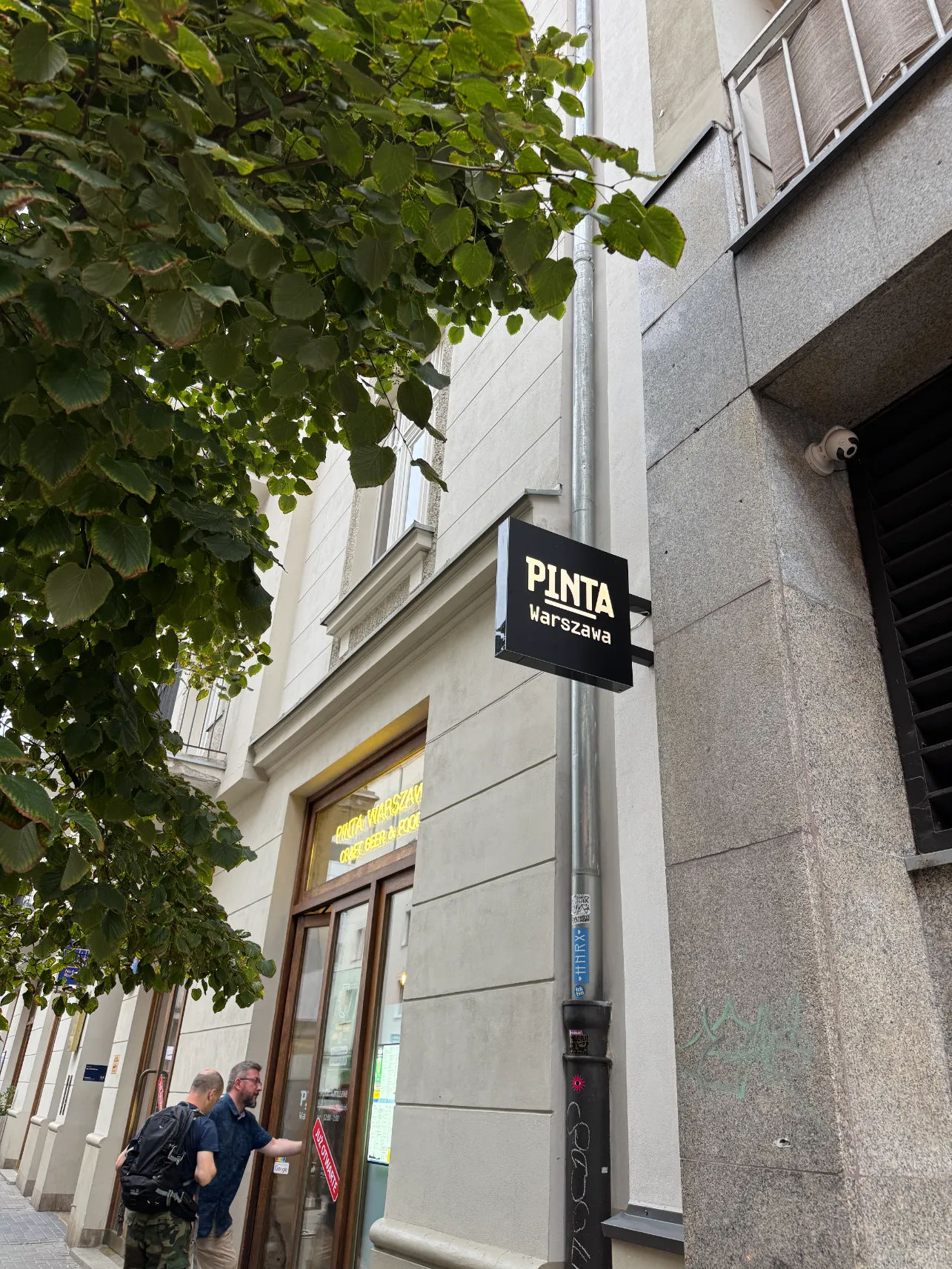
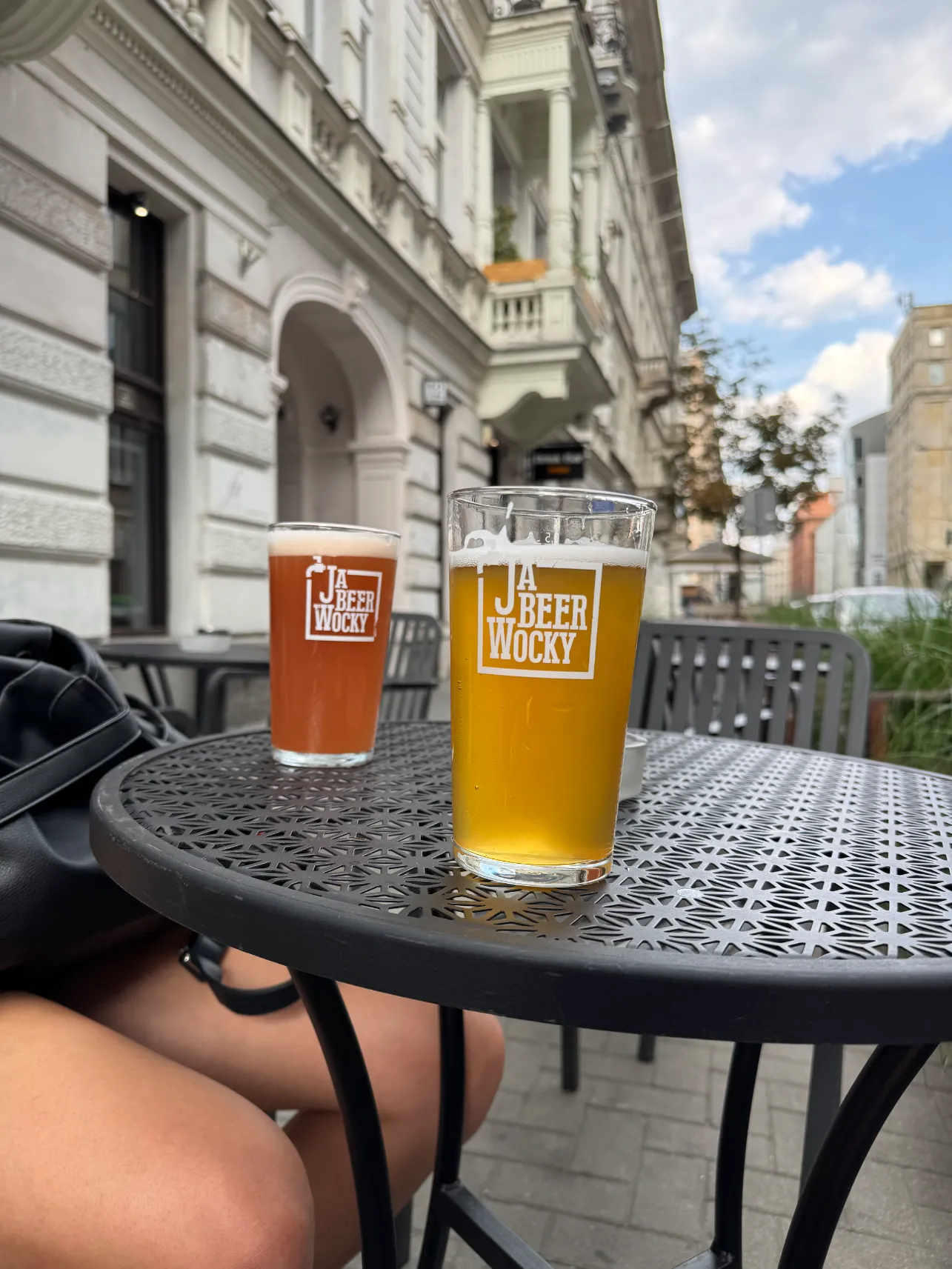
And if you want to stay up to date with more travel inspirations, check out our Instagram!
@journeysjar